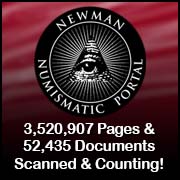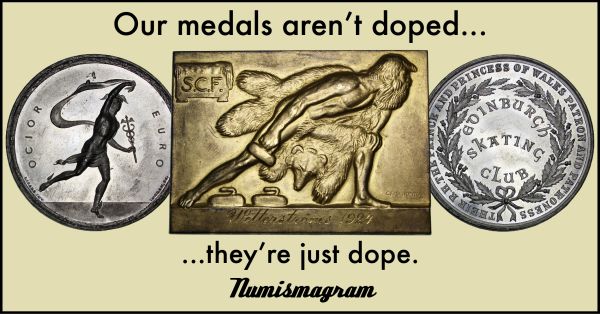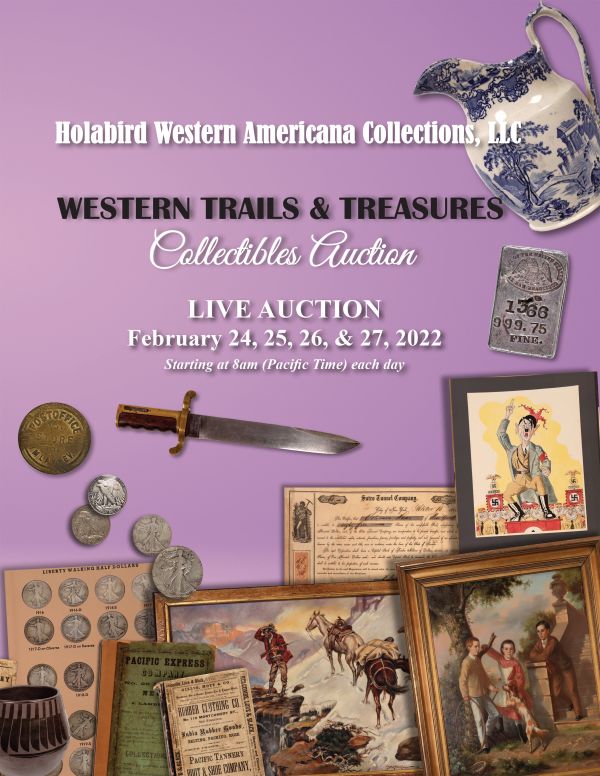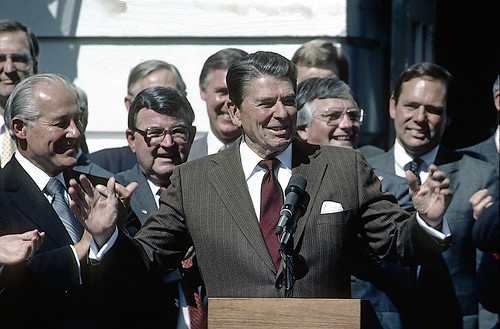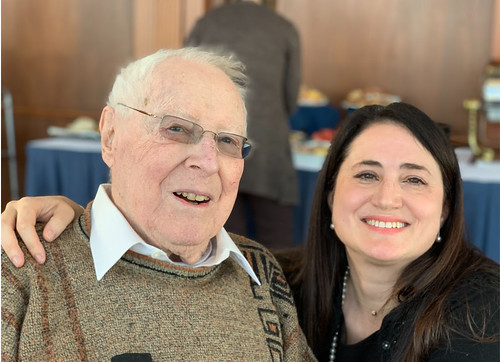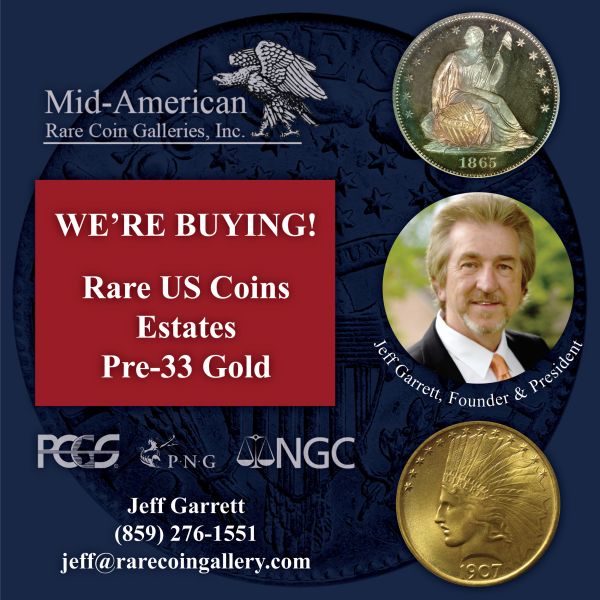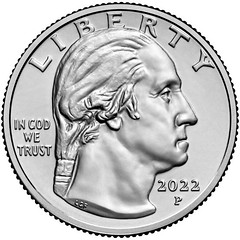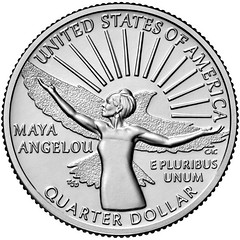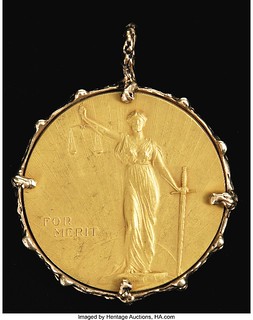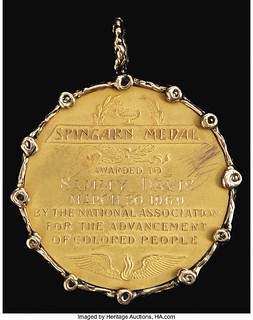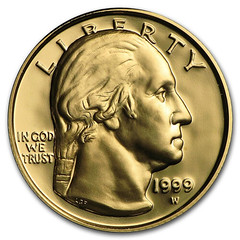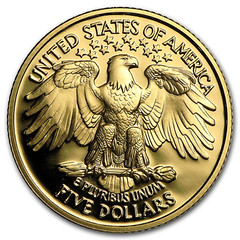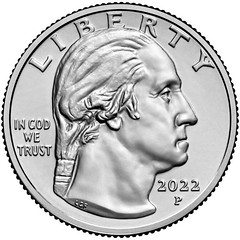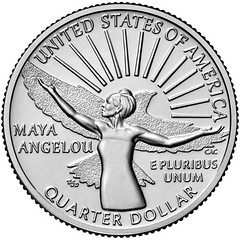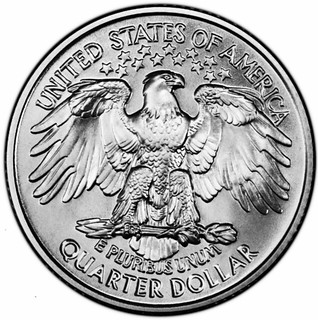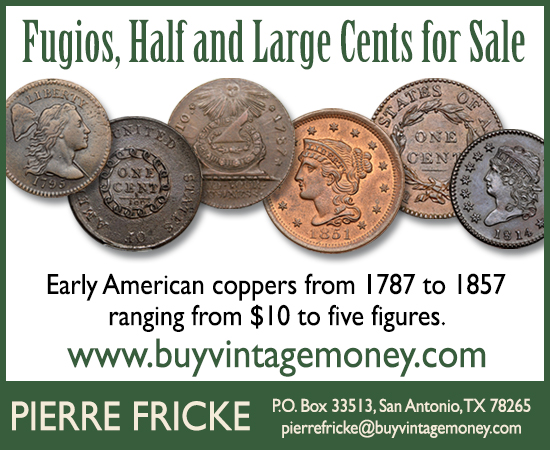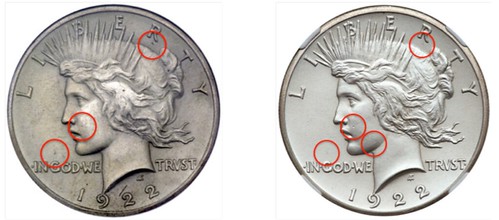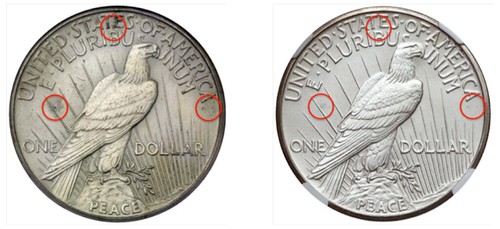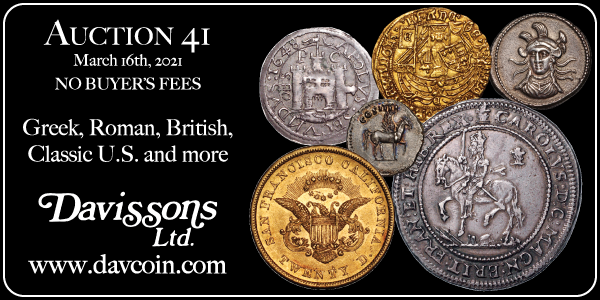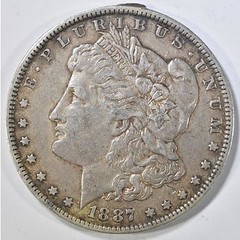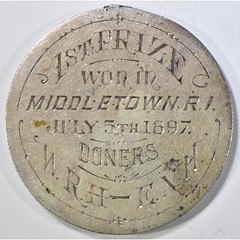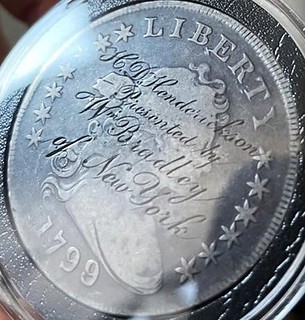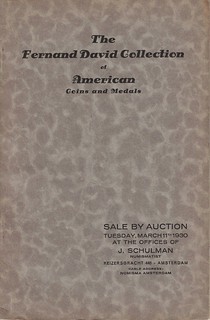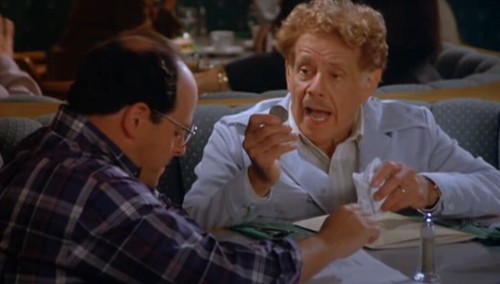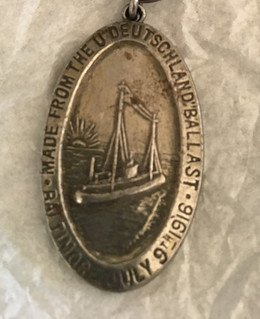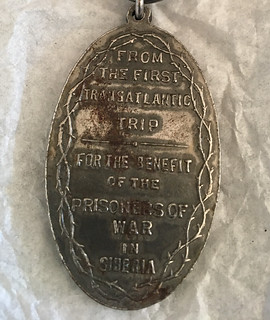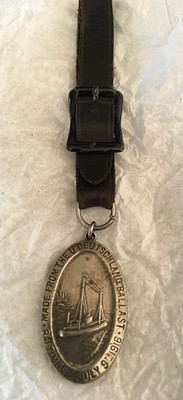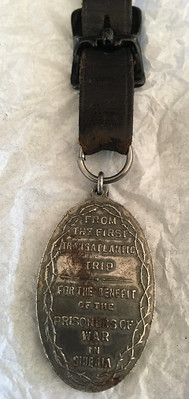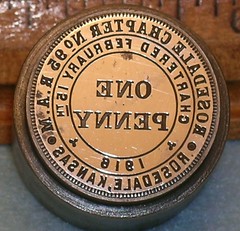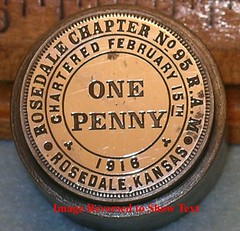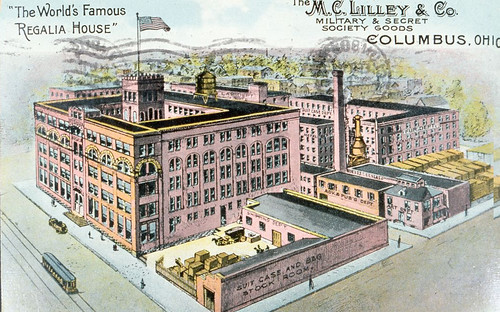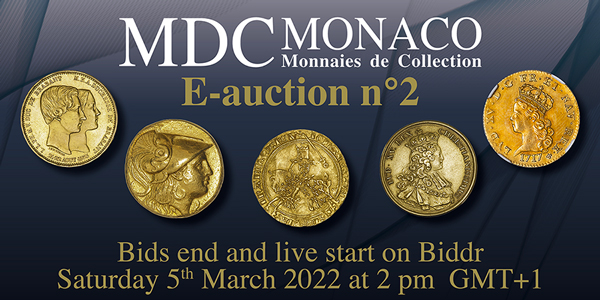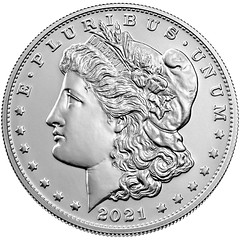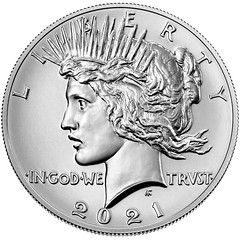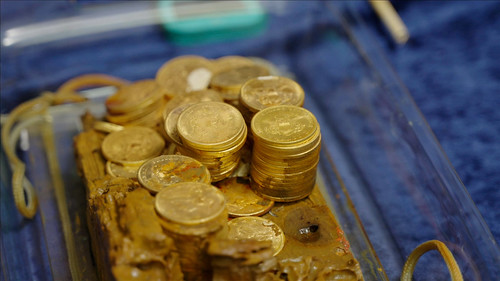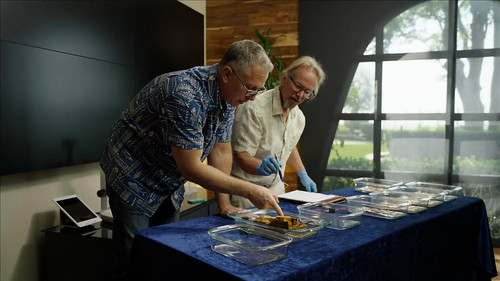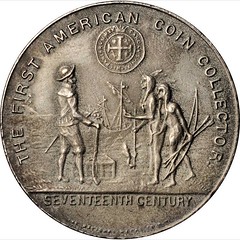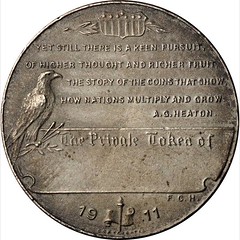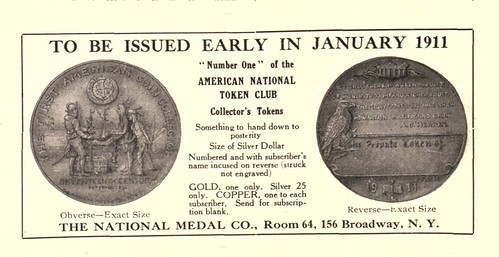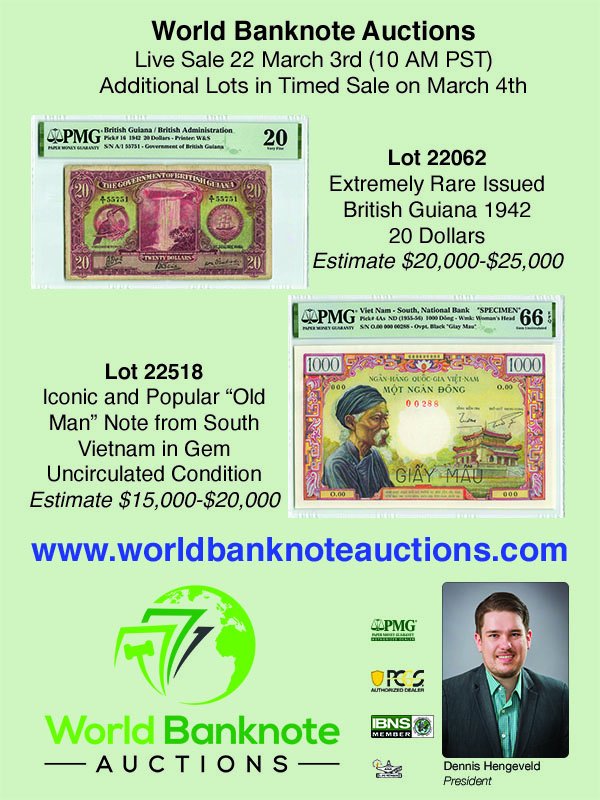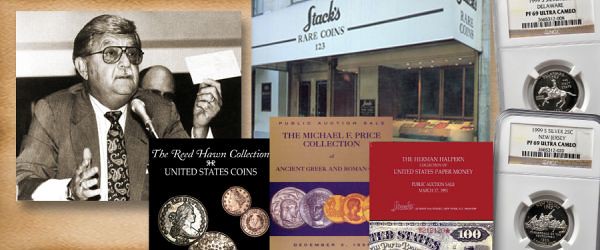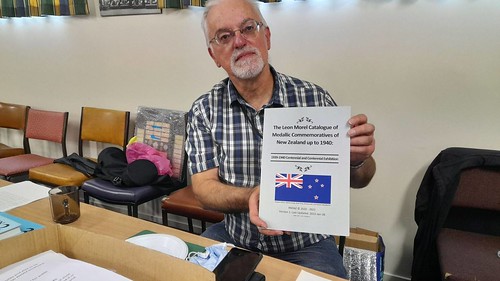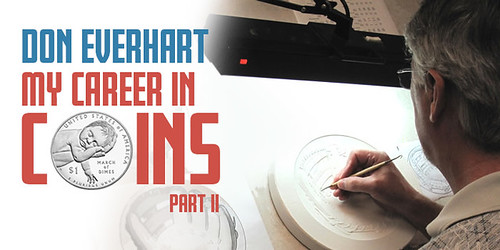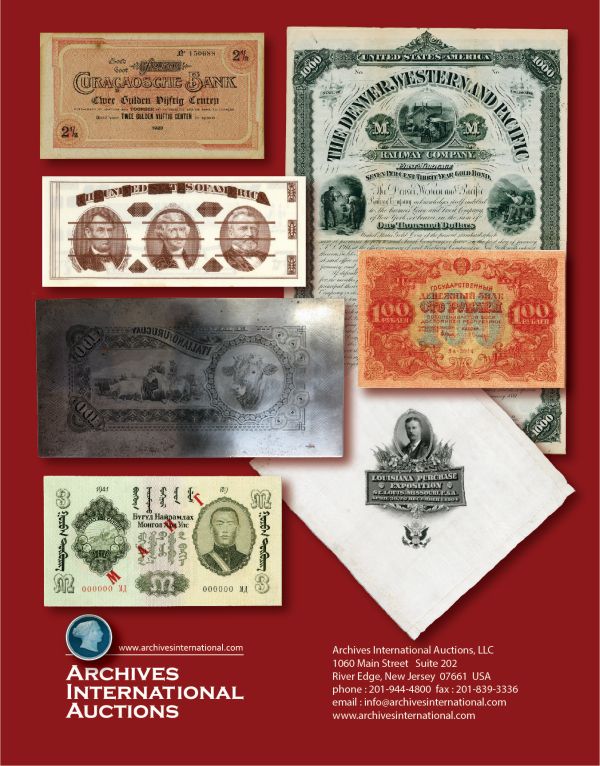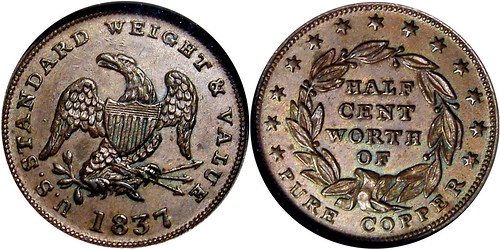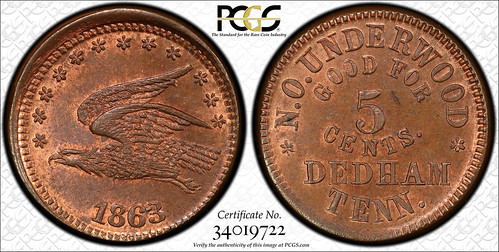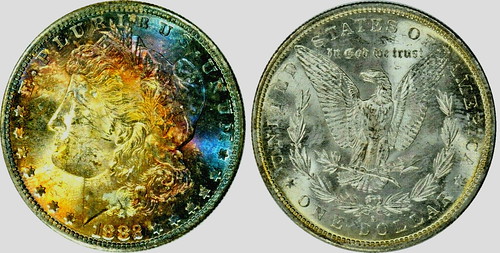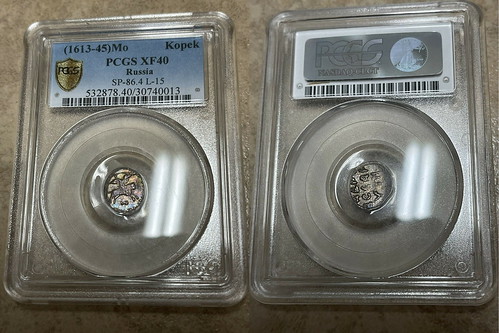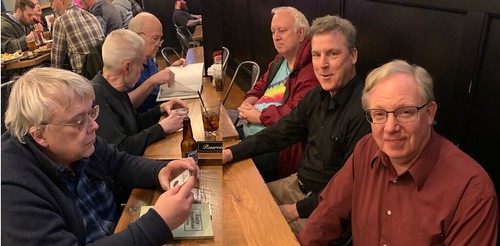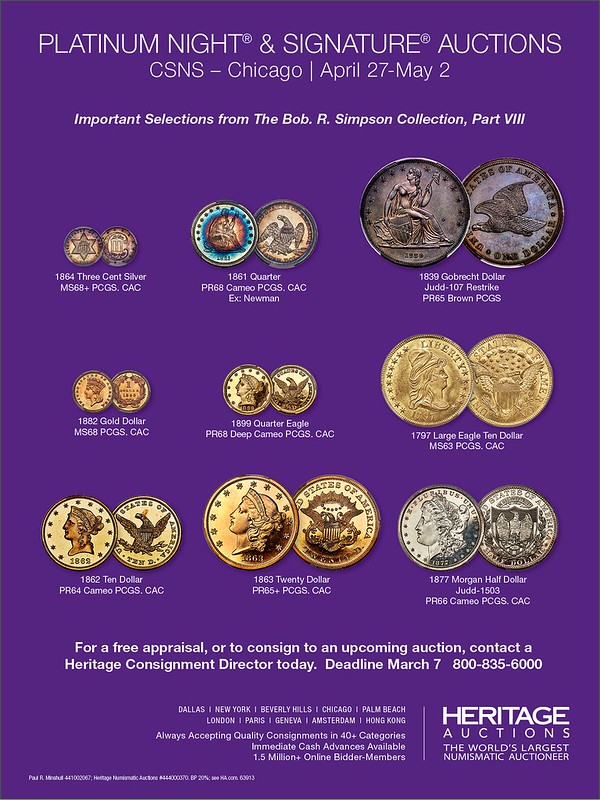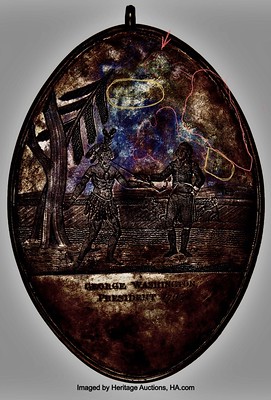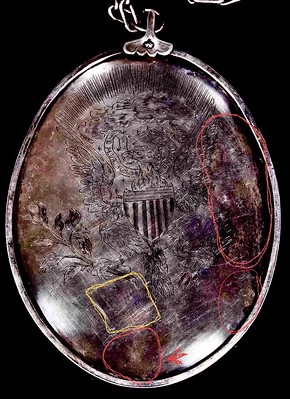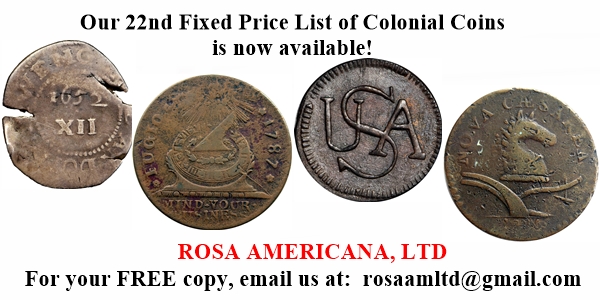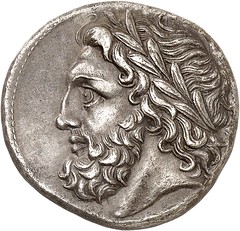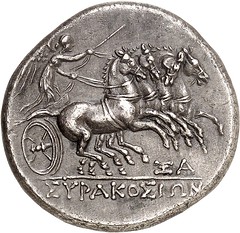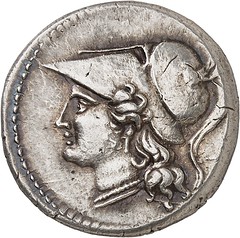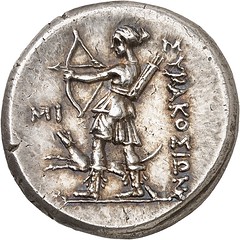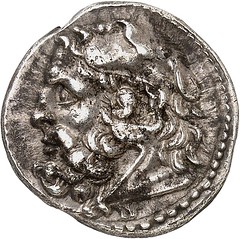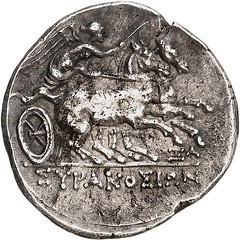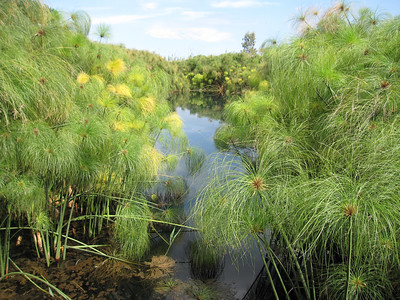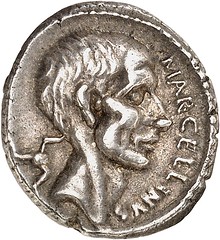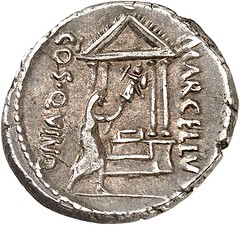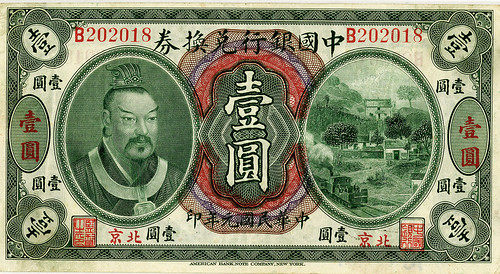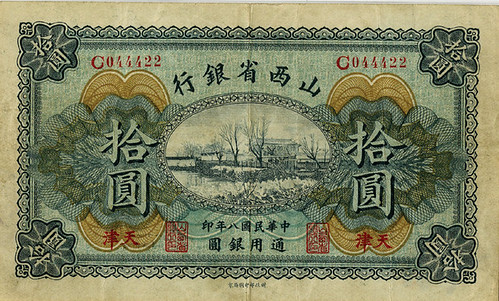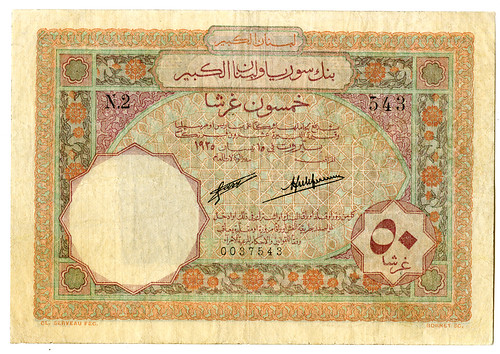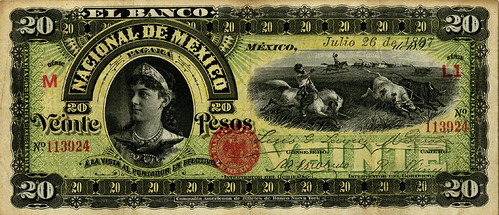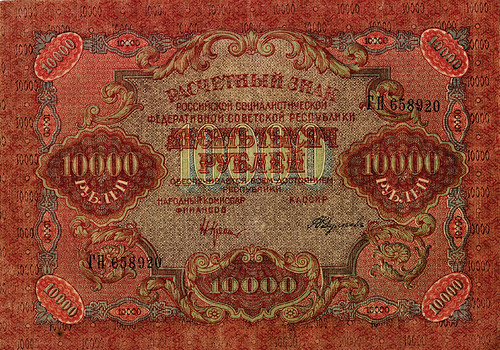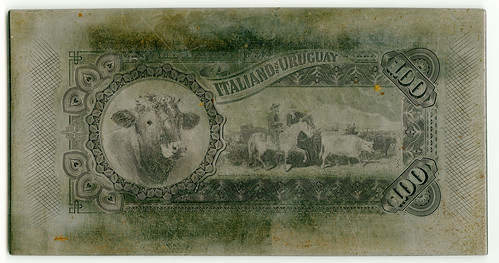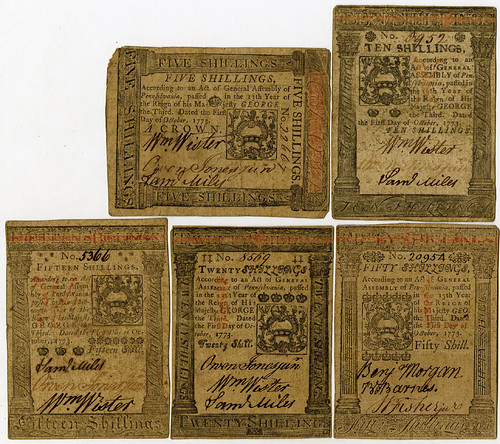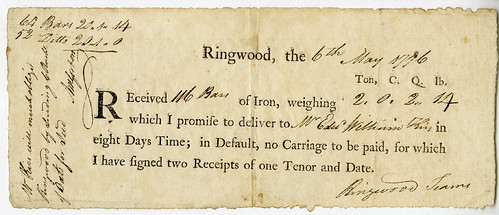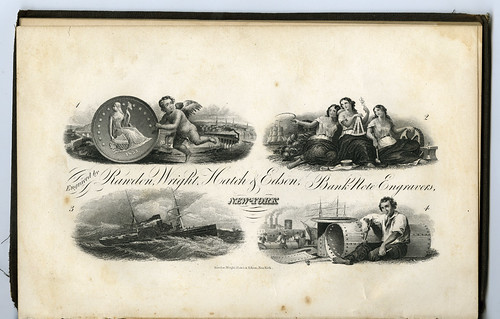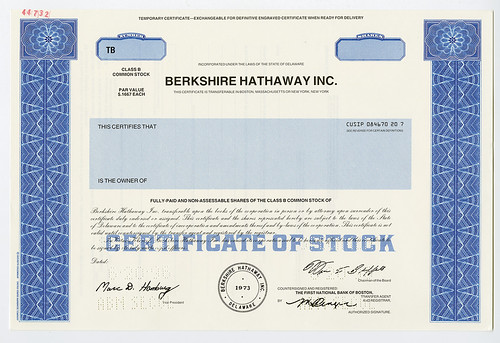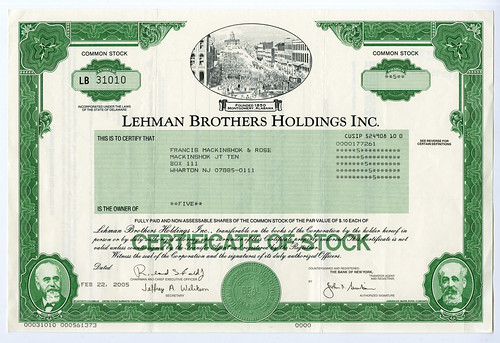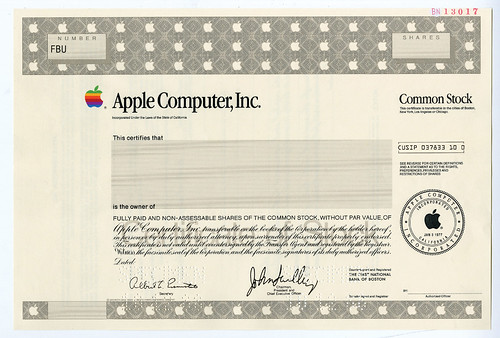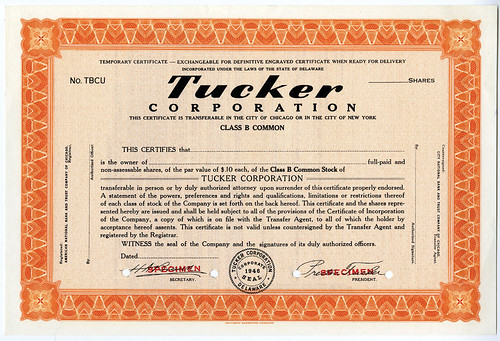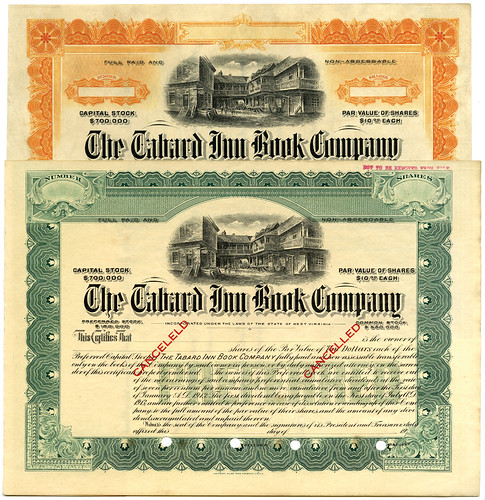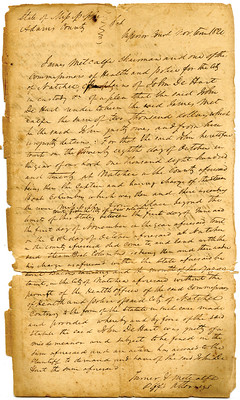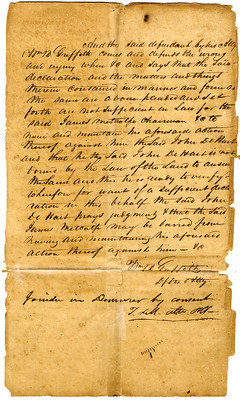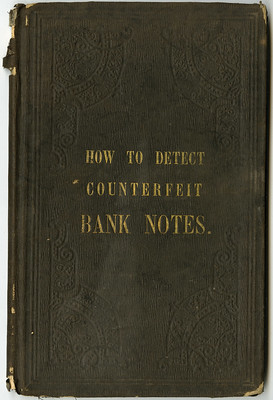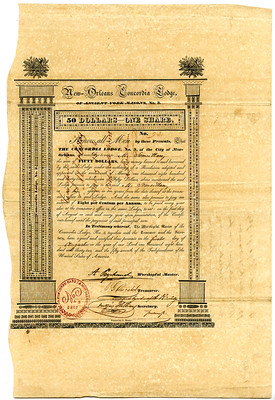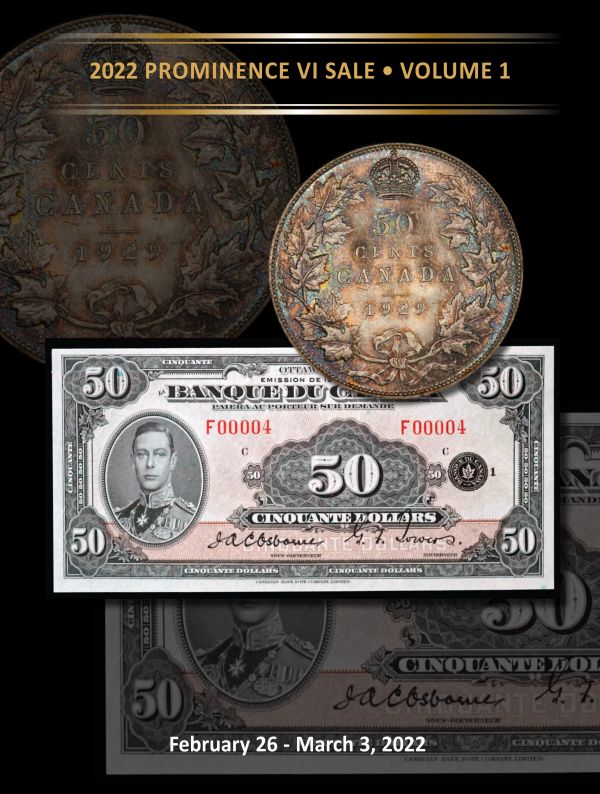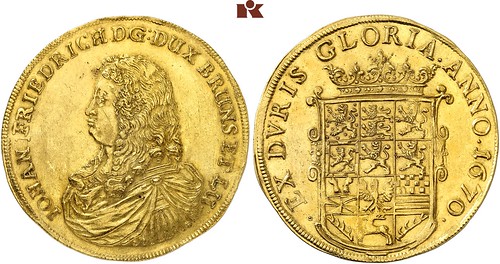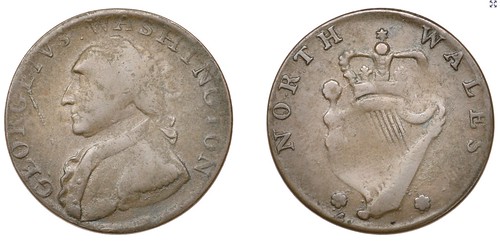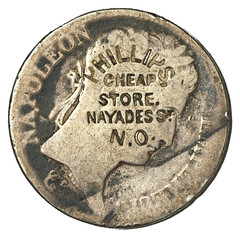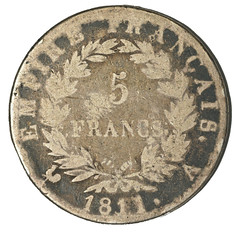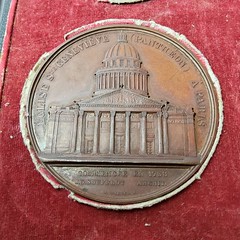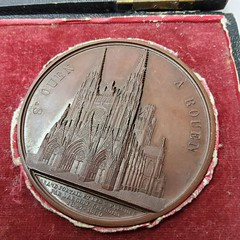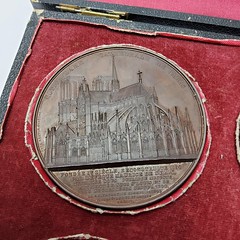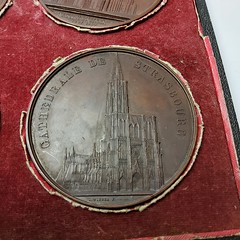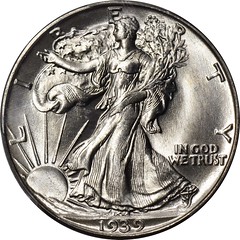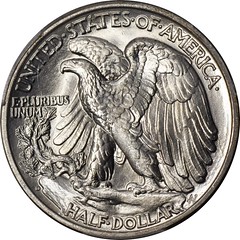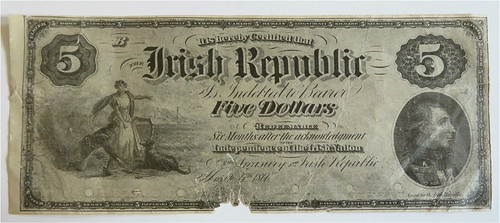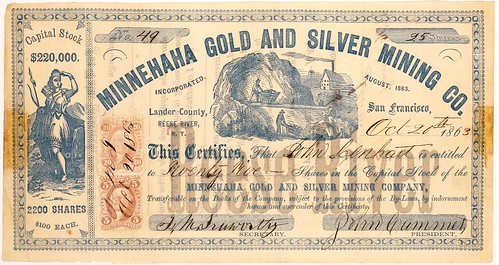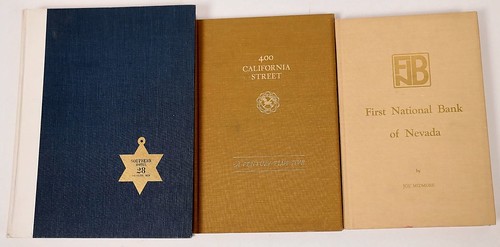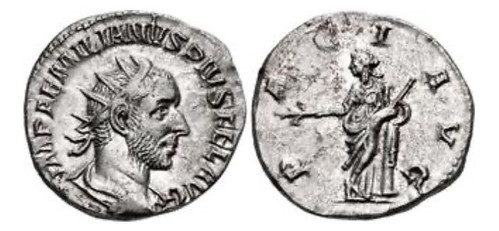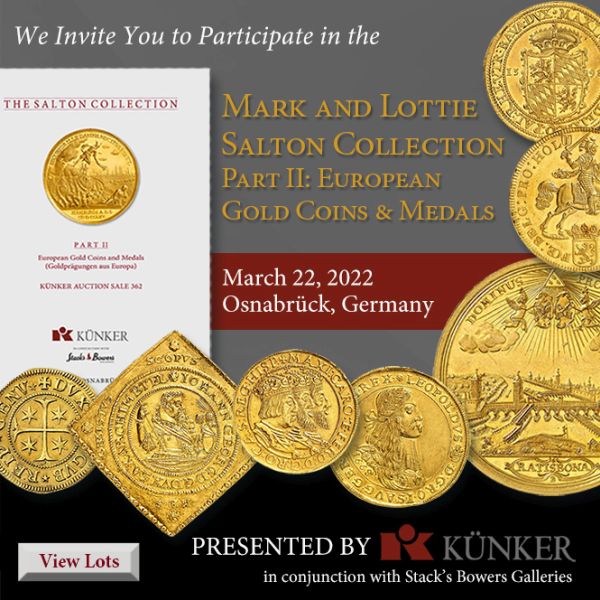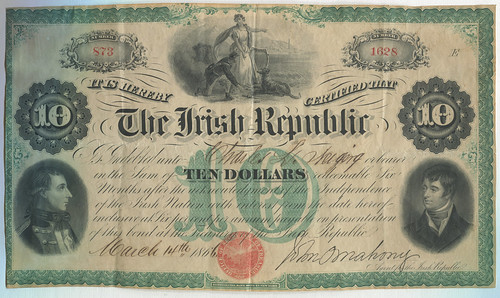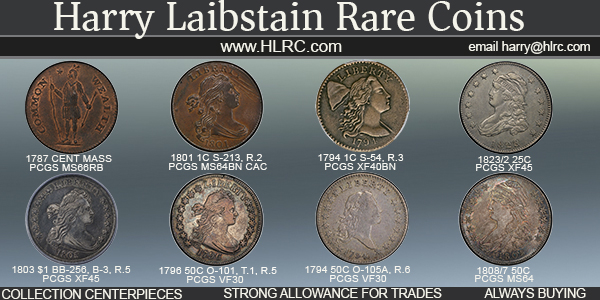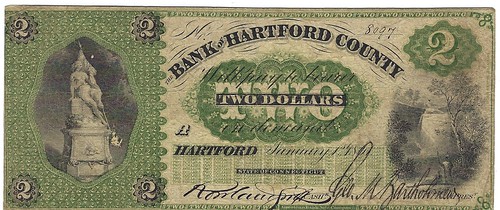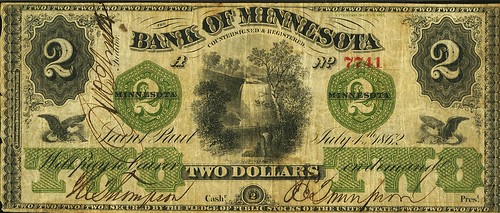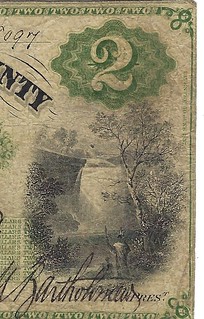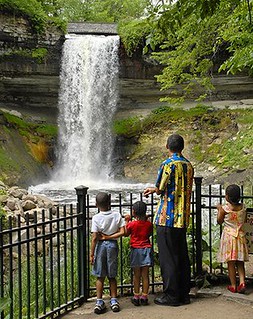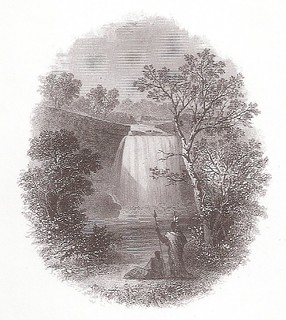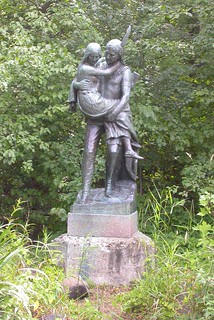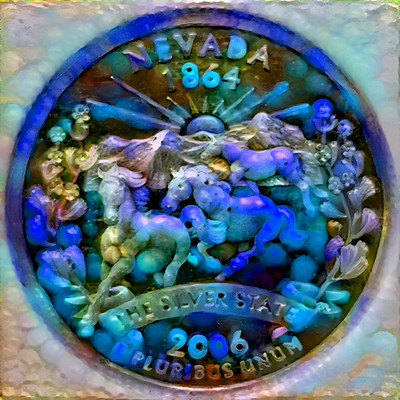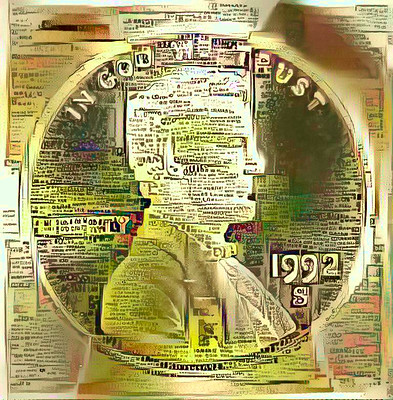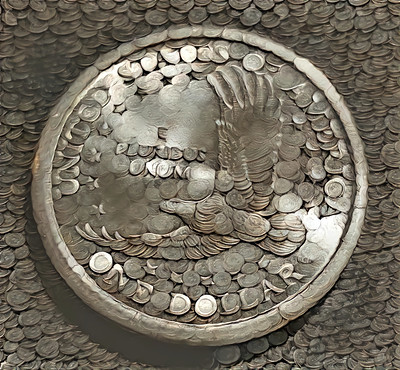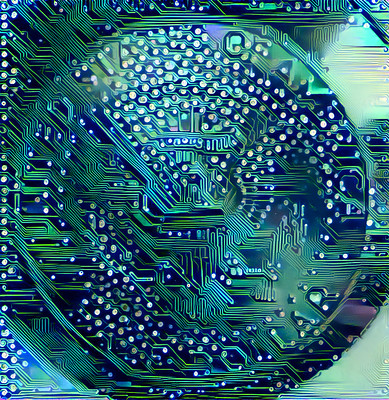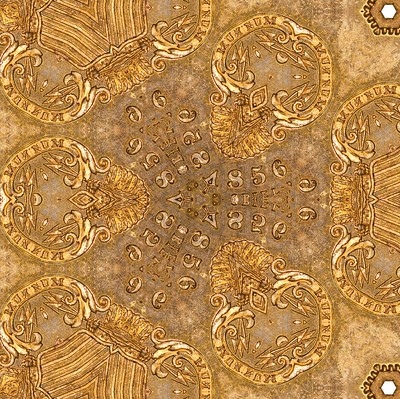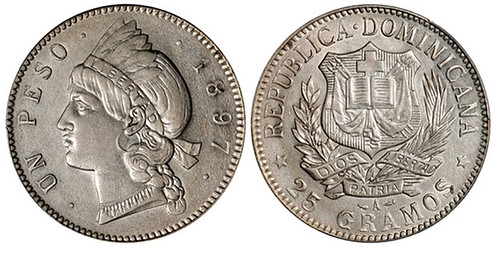
Visit our NBS Sponsors



About UsThe Numismatic Bibliomania Society is a non-profit association devoted to the study and enjoyment of numismatic literature. For more information please see our web site at coinbooks.org SubscriptionsThose wishing to become new E-Sylum subscribers (or wishing to Unsubscribe) can go to the following web page link MembershipThere is a membership application available on the web site Membership Application To join, print the application and return it with your check to the address printed on the application. Print/Digital membership is $40 to addresses in the U.S., and $60 elsewhere. A digital-only membership is available for $25. For those without web access, write to: Charles Heck, Treasurer AsylumFor Asylum mailing address changes and other membership questions, contact Chuck at this email address: treasurer@coinbooks.org SubmissionsTo submit items for publication in The E-Sylum, write to the Editor at this address: whomren@gmail.com BUY THE BOOK BEFORE THE COIN |
- WAYNE'S WORDS: THE E-SYLUM FEBRUARY 20, 2022
- ASYLUM SPRING 2022 ISSUE PUBLISHED
- KOLBE & FANNING TO OFFER SYD MARTIN LIBRARY
- NEW BOOK: AMERICAN SILVER EAGLES, 4TH EDITION
- CARL H. SUBAK (1919-2022)
- MAYA ANGELOU AND THE SPINGARN MEDAL
- LAURA GARDIN FRASER EAGLE DESIGN
- THE DOUBLE DEUCE PROOF PEACE DOLLAR
- NOTES FROM E-SYLUM READERS: FEBRUARY 20, 2022
- M. C. LILLEY & COMPANY
- WHERE TO CATALOG THOSE 2021 DOLLARS?
- SS CENTRAL AMERICA MINT BOX OF DOUBLE EAGLES
- VOCABULARY TERM: HORN SILVER
- THE FIRST AMERICAN COIN COLLECTOR MEDAL
- HARVEY STACK'S NUMISMATIC FAMILY, PART 115
- MARTIN PURDY INTERVIEW
- DON EVERHART'S CAREER IN COINS, PART 4
- WAYNE'S NUMISMATIC DIARY: FEBRUARY 20, 2022
- MORE ON THAT 1792 INDIAN PEACE MEDAL
- THE LAST COINS OF INDEPENDENT SYRACUSE
- ARCHIVES INTERNATIONAL AUCTION 74
- NUMISMATIC NUGGETS: FEBRUARY 20, 2022
- ROMAN EMPERORS WHO HAD THE SHORTEST REIGNS
- FENIAN BROTHERHOOD IRISH REPUBLIC BONDS
- HIAWATHA-MINNEHAHA BANKNOTE VIGNETTE
- SOME COIN ART EYE CANDY
- LOOSE CHANGE: FEBRUARY 20, 2022
- FEATURED WEB SITE: RNUMIS
Click here to read the thin version on the web
Click here to subscribe
Click here to access the complete archive
To comment or submit articles, reply to whomren@gmail.com
Content presented in The E-Sylum is not necessarily researched or independently fact-checked, and views expressed do not necessarily represent those of the Numismatic Bibliomania Society.
WAYNE'S WORDS: THE E-SYLUM FEBRUARY 20, 2022
 New subscribers this week include:
Anthony DeFusco, and
Nick Rodrigues.
Welcome aboard! We now have 6,951 subscribers.
New subscribers this week include:
Anthony DeFusco, and
Nick Rodrigues.
Welcome aboard! We now have 6,951 subscribers.
Thank you for reading The E-Sylum. If you enjoy it, please send me the email addresses of friends you think may enjoy it as well and I'll send them a subscription. Contact me at whomren@gmail.com anytime regarding your subscription, or questions, comments or suggestions about our content.
This week we open with a new issue of our print journal, an upcoming numismatic literature sale, a new book, and update from the Newman Numismatic Portal, a coin design proposal, and more.
Other topics this week include the Spingarn medal, Laura Gardin Fraser's eagle reverse design, M.C. Lilley & Co., coins from the SS Central America, horn silver, Carl Subak, Martin Purdy, Don Everhart, Paul Wittlin, Syd Martin, coins of Syracuse, Fenian Brotherhood bonds, auction previews and fraternal regalia in America.
To learn more about American Silver Eagles, the Double Deuce Proofs, Woodward's "D" sale, coins on television, the rare "Winged Roosevelt" pattern, Masonic pennies, the First American Coin Collector medal, the Reed Hawn Collection, the Rebel Coin Shop, Jacques Wiener architectural medals, Hiawatha and Minnehaha, foreign coins struck by the U.S. Mint, and Julian Leidman's pants, read on. Have a great week, everyone!
Wayne Homren
Editor, The E-Sylum
ASYLUM SPRING 2022 ISSUE PUBLISHED
The Spring 2022 issue of The Asylum is on the way from our sponsor, the Numismatic Bibliomania Society. Maria Fanning edits our print journal, and she submitted this report and President Tom Harrison's message. -Editor
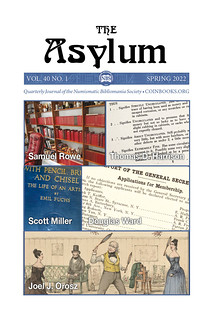 The NBS's The Asylum's Spring 2022 Issue
The NBS's The Asylum's Spring 2022 Issue
Maria Fanning, editor
In The Asylum's Spring 2022 issue, we have a contribution from new author Douglas Ward, the next installment of Joel Orosz's series on Charles Ira Bushnell's Flandin's Catalogue of Coins and Medals, an article from our president Tom Harrison, among others, as well as BiblioFiles on NBS members Dr. John Francis Rainey and Austin Goodwin Andrews.
Sign up or renew membership in the NBS to receive future issues of The Asylum. Digital memberships are available for only $25, and print and digital memberships for $40 (within the US) at coinbooks.org. We also offer Youth Memberships for only $10.
Table of Contents:
- My Red Book Collection By Samuel S. Rowe
- Paul Wittlin and His Innovative Grading Scale By Thomas D. Harrison
- Defining the Irreplaceable By Scott H. Miller
- The American Numismatic Association Election of 1909 as Viewed through Its Membership Applications from 1907 to 1910 By Douglas Ward
- ASSOCIATIONS: Autographs • Annotations • Inscriptions Charles Ira Bushnell's Flandin's Catalogue of Coins and Medals: Part II, The Pierre Flandin Sale, June 6, 1855 By Joel J. Orosz
Message from the NBS President Tom Harrison
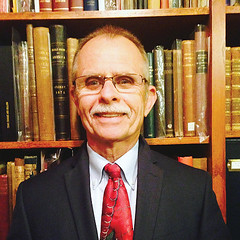 Isaac Wood, Samuel and Henry Chapman, Alexander Wylie, Harry W. Bass, Jr. and a handful of other numismatists had the foresight to assemble amazing libraries or vast accumulations of numismatic literature and related ephemeral materials. From the hobby's inception, insightful collectors, some prominent and others anonymous today, have valued relevant literature to enhance their collecting experience. Since those early days a few discriminating collectors in each generation have treasured and then passed on their libraries to the next generation. Throughout the decades, dedicated custodians have donated invaluable volumes to the ANS and ANA libraries for all to appreciate, as well as provided literature to line our shelves for study and enjoyment.
Isaac Wood, Samuel and Henry Chapman, Alexander Wylie, Harry W. Bass, Jr. and a handful of other numismatists had the foresight to assemble amazing libraries or vast accumulations of numismatic literature and related ephemeral materials. From the hobby's inception, insightful collectors, some prominent and others anonymous today, have valued relevant literature to enhance their collecting experience. Since those early days a few discriminating collectors in each generation have treasured and then passed on their libraries to the next generation. Throughout the decades, dedicated custodians have donated invaluable volumes to the ANS and ANA libraries for all to appreciate, as well as provided literature to line our shelves for study and enjoyment.
Today bibliophiles covet early priced and named catalogs, inscribed volumes and correspondence that open the door to a bygone time. You, the members of Numismatic Bibliomania Society, are carrying on the tradition by collecting and conserving these historical works. Besides treasuring the classic works, amazing ephemeral collections are forming and even sets of little-remembered dealer's catalogs, fixed price lists and periodicals are reuniting so they can weave together the complete historical numismatic story for future enthusiasts. As ardent supporters of the NBS you are helping to promote an interest in our branch of the hobby to the wider numismatic community. Kudos to our past hobby visionaries and the current NBS membership for continuing to carry the torch.
May your library provide investigation, discovery and most of all, enjoyment.
Remember, while The E-Sylum is free to all, only paid members of the Numismatic Bibliomania Society receive our print journal, The Asylum. Print/Digital membership is $40 to addresses in the U.S., and $60 elsewhere. A digital-only membership is available for $25. -Editor
To join NBS or renew your membership, see:
https://www.coinbooks.org/about/membership.html
KOLBE & FANNING TO OFFER SYD MARTIN LIBRARY
Kolbe & Fanning will be offering the numismatic library of former American Numismatic Society President and Numismatic Bibliomania Society Governor Syd Martin. Here's the announcement. -Editor
Sydney F. Martin's Outstanding Numismatic Library Offered for Sale
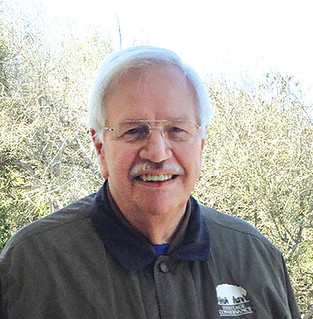 Kolbe & Fanning Numismatic Booksellers are announcing the sale of the outstanding numismatic library formed by Sydney F. Martin for sale at auction on Saturday, April 30, 2022. "The Martin Library is among the finest formed on the subject of early American numismatics, and was painstakingly assembled over the course of more than thirty years. We are honored to have been asked to catalogue the library, having worked closely with Syd as he built it," says bookseller and cataloguer David Fanning. While the focus of the library is on the early coinage of the Americas, Syd's interests were such that it by necessity includes many works on British, Irish, French and Spanish numismatics as well.
Kolbe & Fanning Numismatic Booksellers are announcing the sale of the outstanding numismatic library formed by Sydney F. Martin for sale at auction on Saturday, April 30, 2022. "The Martin Library is among the finest formed on the subject of early American numismatics, and was painstakingly assembled over the course of more than thirty years. We are honored to have been asked to catalogue the library, having worked closely with Syd as he built it," says bookseller and cataloguer David Fanning. While the focus of the library is on the early coinage of the Americas, Syd's interests were such that it by necessity includes many works on British, Irish, French and Spanish numismatics as well.
Syd Martin (1945–2021) was an entrepreneur in the defense and intelligence industries and a well-known collector of early American coins. A graduate of MIT, his success as a businessman, coupled with an analytical frame of mind, allowed him to conduct extensive numismatic studies of some of the most complicated and demanding series in the sphere of colonial Americana. He was the author of four landmark studies in this field, covering the Hibernia and Rosa Americana coinage of William Wood, the French coinage for North America, and the enigmatic St. Patrick coinage. He also wrote a detailed catalogue of the extensive medallic issues struck in commemoration of the 1932 bicentennial of the birth of George Washington. He served as President of the American Numismatic Society and was heavily involved in the Colonial Coin Collectors Club and the Numismatic Bibliomania Society.
The Martin Library will be presented in a full-color catalogue, and will be conducted online on their live bidding platform at bid.numislit.com. Those wishing to participate on their devices can download the Kolbe & Fanning app through the Apple or Google Play Store.
Further details will be forthcoming. Sign up to receive email notifications at numislit.com or contact them at orders@numislit.com for more information.
And don't forget the Kolbe & Fanning Buy or Bid #18 sale closes tomorrow, Monday, February 21, 2022. See the full catalog here:
https://www.numislit.com/images/upload/kolbefanningbob18.pdf
-Editor
To read the earlier E-Sylum articles, see:
SYDNEY F. MARTIN (1945-2021)
(https://www.coinbooks.org/v24/esylum_v24n04a02.html)
ROGER SIBONI REMEMBERS SYD MARTIN
(https://www.coinbooks.org/v24/esylum_v24n04a03.html)
MORE ON SYD MARTIN
(https://www.coinbooks.org/v24/esylum_v24n04a04.html)
KOLBE & FANNING BUY OR BID SALE NUMBER 18
(https://www.coinbooks.org/v25/esylum_v25n07a02.html)
NEW BOOK: AMERICAN SILVER EAGLES, 4TH EDITION
Dennis Tucker of Whitman Publishing forwarded this press release about the new edition of John Mercanti's American Silver Eagles. Thanks. -Editor
The fourth edition of John M. Mercanti's American Silver Eagles: A Guide to the U.S. Bullion Coin Program releases in March 2022 and will make its coin-show debut at the Whitman Coin & Collectibles Expo in Baltimore, March 31. The updated and expanded 224-page hardcover volume will be available from bookstores and hobby shops and online, and in the meantime is available for preorder (including at Whitman.com). Here, Michael Reagan, the eldest son of President Ronald Reagan, discusses his father and the American Eagle bullion coin programs that started during his presidency.
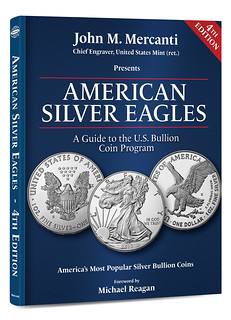 The years of my father's presidency, 1981 to 1989, were very significant for our nation's coinage. Every denomination of modern circulating coin, from cents to dollars, was in full-scale production. The United States' commemorative coin program—dormant since the early 1950s—was revived, and dramatically so. The Mint turned out an impressive range of national medals. And the United States finally launched its exciting entry into the world of silver and gold bullion coinage. Retired Mint chief engraver John Mercanti explores, in depth, an important part of that legacy: the American Silver Eagle, authorized by President Ronald Reagan on July 9, 1985.
The years of my father's presidency, 1981 to 1989, were very significant for our nation's coinage. Every denomination of modern circulating coin, from cents to dollars, was in full-scale production. The United States' commemorative coin program—dormant since the early 1950s—was revived, and dramatically so. The Mint turned out an impressive range of national medals. And the United States finally launched its exciting entry into the world of silver and gold bullion coinage. Retired Mint chief engraver John Mercanti explores, in depth, an important part of that legacy: the American Silver Eagle, authorized by President Ronald Reagan on July 9, 1985.
One way my father supported the hobby of numismatics was with Proclamation 5027, signed by him on March 7, 1983, and filed with the Office of the Federal Register the following morning. With this he proclaimed the week beginning April 17, 1983, as being National Coin Week. Since the beginning of history,
he noted, coins have played an important role in the story of civilization. They reflect the economic development of their country of origin, as well as the scientific advancement and artistic values of the people who produce and use them. Today, millions of Americans collect coins for both pleasure and profit.
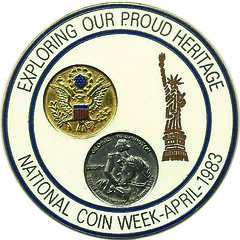 In the text of the proclamation he remarked on the U.S. Mint's annual Proof sets, the new George Washington commemorative half dollar, and the upcoming (1983–1984) Los Angeles Olympiad coins (
In the text of the proclamation he remarked on the U.S. Mint's annual Proof sets, the new George Washington commemorative half dollar, and the upcoming (1983–1984) Los Angeles Olympiad coins (the first commemorative Olympic coinage ever issued by our country will be introduced in gold and silver
).
Furthermore, he recognized that coin collecting has educational and cultural value, promotes greater understanding of our history and heritage, and is enjoyed by millions of Americans.
His signature sealed the proclamation: Now, Therefore, I, Ronald Reagan, President of the United States of America, do hereby proclaim the week beginning April 17, 1983, as ‘National Coin Week' and call upon the people of the United States to observe this week with appropriate ceremonies and activities.
Just over two years later, the president's signature would bring another boost to the hobby community. The Statue of Liberty–Ellis Island Commemorative Coin Act inaugurated the hugely popular 1986 half dollar, silver dollar, and gold $5 coins honoring the centennial of these national treasures. And an amendment to that bill—the Liberty Coin Act—was the start of the American Silver Eagle bullion program.
In American Silver Eagles: A Guide to the U.S. Bullion Coin Program, John Mercanti gives us a unique behind-the-scenes look at the design, production, and other creative and technical aspects of the American Silver Eagle. Mercanti knows what he's talking about—he's the talented sculptor-engraver who created the coin's reverse and helped render the redesign of Adolph Weinman's famous Walking Liberty
obverse. His collaborator in this effort is Michael Miles
Standish, one of the foremost experts on modern American coinage and a tireless promoter of this great national hobby. Mercanti offers the definitive story of the American Silver Eagle. Whether you collect these coins, invest in them, or simply enjoy their rare artistry, you will benefit from this book.
The coin that started in President Reagan's second term has long since passed its quarter-century milestone and shows no sign of slowing down. Every year Americans (and collectors and investors worldwide) buy tens of millions of American Silver Eagles, adding them to their retirement accounts, displaying them proudly in their coin collections, and giving them to friends and family as treasured gifts. There are many wonderful facets to my father's presidential legacy. As someone who appreciates our nation's coins—and the history, culture, and heritage they represent—I am glad to count the American Silver Eagle as one of his contributions.
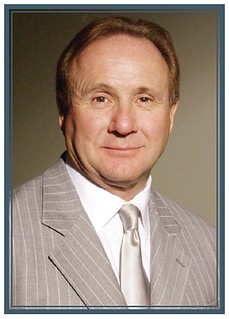 Michael Reagan, the eldest son of President Ronald Reagan, is an author, columnist, social commentator, political strategist, and humanitarian. His career has included nationwide radio syndication with an audience of more than five million listeners. A world-record setter in power-boat racing, Reagan has used that venue to raise money and awareness for charities and causes like the U.S. Olympic Team, the Cystic Fibrosis and Juvenile Diabetes Foundations, and the Statue of Liberty Restoration Fund. His books include On the Outside Looking In, The Common Sense of an Uncommon Man: The Wit, Wisdom and Eternal Optimism of Ronald Reagan, and Twice Adopted. Reagan is past chairman of the board of the John Douglas French Alzheimer's Foundation and is chairman and president of the Reagan Legacy Foundation. He and his wife live in California.
Michael Reagan, the eldest son of President Ronald Reagan, is an author, columnist, social commentator, political strategist, and humanitarian. His career has included nationwide radio syndication with an audience of more than five million listeners. A world-record setter in power-boat racing, Reagan has used that venue to raise money and awareness for charities and causes like the U.S. Olympic Team, the Cystic Fibrosis and Juvenile Diabetes Foundations, and the Statue of Liberty Restoration Fund. His books include On the Outside Looking In, The Common Sense of an Uncommon Man: The Wit, Wisdom and Eternal Optimism of Ronald Reagan, and Twice Adopted. Reagan is past chairman of the board of the John Douglas French Alzheimer's Foundation and is chairman and president of the Reagan Legacy Foundation. He and his wife live in California.
American Silver Eagles: A Guide to the U.S. Bullion Coin Program, 4th edition
By John M. Mercanti; foreword by Michael Reagan
ISBN 079484913X
Hardcover, 8.5 x 11 inches, 224 pages, full color
Retail $29.95 U.S.
https://whitman.com/american-silver-eagles-a-guide-to-the-u-s-bullion-coin-program-4th-edition/
CARL H. SUBAK (1919-2022)
In her email Newsletter #186 this week, Shanna Schmidt wrote about her late friend and mentor Carl Subak. With permission, we're republishing it here. Thanks. Sorry to hear the news. -Editor
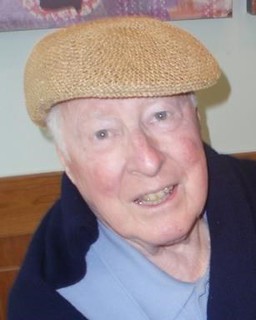 It has been a difficult few weeks for me personally as I lost someone who had a tremendous impact in my life and career. On the morning of February 6th I received a phone call that my beloved friend and coin conspirator Carl Subak had died at the ripe old age of 103.
It has been a difficult few weeks for me personally as I lost someone who had a tremendous impact in my life and career. On the morning of February 6th I received a phone call that my beloved friend and coin conspirator Carl Subak had died at the ripe old age of 103.
Carl was nothing short of a miracle. He was born into a well-to-do Viennese family but as a teenager when WWII broke out he endured tremendous adversity as a Jew. He decided to leave his home country of Austria when he went into a park and saw a sign that said not for Jews
on a bench. He was only a young man. His parents perished at the hands of the Nazi's and only through the eventual help of the Unitarian Service Committee was he able to find refuge in the United States.
Carl was interested in geography and was a lifelong lover of mountain climbing. He also made his career early on in stamps selling through the mail order company of Sears Roebuck. This led him to eventually embrace his childhood passion of coins into a business. Carl was lucky enough to attend the famous Franz Trau sale (a collaboration between Gilhofer & Ranschburg Vienna and Adolph Hess A.G. of Luzern) in May of 1935 (Carl was only 16 years old at the time) and purchased his first ancient coin in auction, a Gordian III denarius.
After moving to Chicago in order to be closer to Sears management (he told me that they only agreed to employ him if he would move closer so if he made a mistake they could wring his neck
easier), he rented office space and well, the rest is history.
I never wanted Carl to be forgotten by the coin world so I made several hours of videos with Carl starting right after his 100th birthday. Those videos were gifted to his son Jon to enjoy and perhaps one day they will be available for others to hear.
Carl was a man that did a lot behind the scenes. When I asked him about all the auctions he attended and who he was most influenced by, he was honest. He said he had a representative help him overseas in auctions but mainly he stayed away from that craziness. He was close friends with Tom Eden and also the late Pierre Strauss (of Münzen und Medaillen). He loved Roman quinarii and Aes Grave. Dr. Cathy King, through the help of the Ashmolean museum, published a book on Roman quinarii and did a two page dedication to Carl at the beginning of the book. His collection also graces many of the contents of that book. A quiet but extremely generous and thoughtful man, Carl has left an incredible empty space in my heart. I will never forget our lunches at Italian Village in Chicago where the waiters all knew him by name and saved his favorite table in a nook on the second floor. Even to his last days (I saw him four times before he died) his mind was clear but his body just was giving away to the natural order of things.
Rest in peace Carl. May his memory be a blessing.
To read Carl's online obituary, see:
Carl H. Subak
(https://www.legacy.com/us/obituaries/chicagotribune/name/carl-subak-obituary?id=32816043)
MAYA ANGELOU AND THE SPINGARN MEDAL
Newman Numismatic Portal Project Coordinator Len Augsburger provided the following research note on the rare Spingarn medal. -Editor
Maya Angelou and the Spingarn Medal
The American Women Quarter Program, a successor to the 50 State Quarters (1999-2008) and America the Beautiful (2010-2021) coin programs, is a four-year series (2022-2025) celebrating the accomplishments and contributions of important American women. The five honorees for 2022 are Maya Angelou, Dr. Sally Ride, Wilma Mankiller, Nina Otero-Warren, and Anna May Wong. Release of the Angelou quarter was forecast for February 7, 2022; however, this product is currently backordered by the U.S. Mint (images courtesy of U.S. Mint).
Angelou's previous numismatic connections include the National Medal of Arts (presented by President Clinton in 2000) and the Presidential Medal of Freedom (conferred by President Obama in 2010). Following Angelou's passing in 2014, two efforts to posthumously award a Congressional gold medal (HR 247, 114th and HR303, 116th) failed to pass in Congress.
Earlier, the NAACP awarded the Spingarn medal to Angelou in 1994. This is the highest honor conferred by the NAACP and recognizes outstanding achievements by African Americans. The NAACP first awarded this medal on February 12, 1915, to Ernest E. Just, the head of physiology at Howard Medical School. The choice of Lincoln's birthday was almost certainly deliberate and indicates a veneration of the 16th president. Since then, the NAACP has awarded this medal annually, with only a few gaps. The Spingarn medal was the brainchild of J. E. Spingarn, a professor at Columbia University. A June 7, 1913 clip from the Denver Star quoted Spingarn:
My idea is not only to encourage and reward the black man, but even more to educate the white man. At least once a year, when this medal is awarded, the white people of the nation will realized that they have obtained a wrong impression of the American Negro from the American newspapers. They will understand that the Negro is not a criminal, but a man with high ambitions and aspirations, doing effective and honorable work for the welfare of the American people.
Within numismatics, the Spingarn medal was first catalogued by National Numismatic Collection Curator T. L. Comparette in the 1914 American Journal of Numismatics, who wrote:
Spingarn Medal for Advancement of Colored People. Obv. A tablet lying across laurel branch, and inscribed SPINGARN MEDAL; upon tablet, Lamp of Science; below, in field, AWARDED TO | (space for name, etc.) | BY THE NATIONAL ASSOCIATION | FOR THE ADVANCEMENT | OF COLORED PEOPLE | ; below, winged torch. Rev. Justice in classical costume standing before rising sun, holding balance in right and supporting sword in left hand; in field, FOR | MERIT |.
Comparette attributed the dies to the engraver H(enning) Ryden, with medals struck by the Whitehead and Hoag Company in Newark, NJ.
Since its first issue in 1915, a number of examples have appeared on the secondary market. The most significant is that of Sammy Davis, Jr., sold by his estate through Heritage Auctions in 2006. This piece appeared in their October 7 sale of that year, lot 24021, and realized $657.25, a shockingly low figure that no doubt would be substantially higher in today's market (images courtesy of Heritage Auctions).
A small number of unawarded pieces have appeared in the numismatic marketplace. The auction firm of Johnson and Jensen sold an example in their Auction #11 (August 17, 1981, lot 277). This piece was described as bronze goldplate,
was unwarded, and realized $95. This same example appears to be offered again, in their Auction #15-16 (March 28, 1982, lot 1309), where it realized $71.50. The piece was unlooped, unlike the Davis example illustrated here.
Joe Levine offered a different example Auction #70 of the Presidential Coin & Antique sale (December 1, 2001, lot 711) that realized $219. This piece exhibited a simple loop and was described as gilt bronze. Another example reported to us, and held privately, traded at $2,500.
The American Numismatic Society holds a bronze example, their catalog no. 1964.140.2. This example is bronze, not gilt, unmounted without a loop, and not edge marked. The online catalog of the National Numismatic Collection does not indicate an example in that collection, but it seems likely it would be among their uncatalogued material, since the Curator Thomas L. Comparette wrote up the medal in the 1914 American Journal of Numismatics. However, Comparette's 1914 catalog of the National Numismatic Collection does not include the Spingarn medal.
The earliest examples were likely gold. An early brochure (https://credo.library.umass.edu/cgi-bin/pdf.cgi?id=scua:mums312-b022-i223), c. 1922, and almost certainly published by the NAACP, describes the piece as gold. Harry Waterson notes that many organizations that issued gold medals used the 1933 ban on private of ownership of gold as a rationale for switching to other formats (in this case, gilt bronze).
The author acknowledges Harry Waterson and Jesse Kraft, who furnished source material for this article.
LAURA GARDIN FRASER EAGLE DESIGN
Wayne Pearson submitted these thoughts on the Laura Gardin Fraser eagle design for the reverse of the Washington quarter. -Editor
In 1932, there was a contest to pick a design for a George Washington commemorative quarter.
Despite the design by Laura Gardin Fraser winning the contest, twice, her work was never used.
However, in 1999, her design was finally used-but not on a circulating quarter, rather on a non circulating $5 gold coin.
Note how beautiful both sides of the coin look.
Now, in 2022, we are finally going to be using the Laura Gardin Fraser design of George Washington on a series of circulating quarters under the American Women quarters program, which will feature five women per year until 2025. Public Law 116-330.
Here is an example of the Fraser design and an example of the first quarter using Maya Angelou.
HOWEVER, even with this program of honoring women, the Fraser eagle reverse design is not being used.
Here is a beautiful mockup of what the design would look like.
See:
https://www.reddit.com/r/coins/comments/korkxx/
mockup_laura_gardin_frasers_washington_quarter/
I suggest if the design was good enough to be used on a $5 gold coin, it should also be good enough to use on a circulating quarter.
I would like to ask all of the readers who agree with me to contact your member of Congress, and ask them propose legislation to amend Public Law 116-330 to add a sixth quarter using the Fraser eagle reverse, along with the five women quarters-for a total of six quarters per year.
In 2009, after ten years of the 50 state quarter designs, five per year, we issued the SIX territorial quarters in the same year. So six quarters can be made.
Since this program is honoring women Laura Gardin Fraser was a woman too and using both her Washington, and her eagle design would be a win-win for both women and for coin collectors.
The legislation was originally proposed by California representative Barbara Lee. If you live in California, she may be your representative.
I thank you in advance.
Great idea, great design. -Editor
To read Public Law 116-330, see:
https://www.govinfo.gov/content/pkg/BILLS-116hr1923enr/pdf/BILLS-116hr1923enr.pdf
For more information on the American Women quarters program, see:
https://en.wikipedia.org/wiki/American_Women_quarters
Here are the new 2022 quarters featuring trailblazing U.S. women
(https://ktla.com/news/nationworld/here-are-the-new-2022-quarters-featuring-trailblazing-u-s-women/)
THE DOUBLE DEUCE PROOF PEACE DOLLAR
Douglas Ward submitted this article based on a presentation he gave to the Pacific Coast Numismatic Society on January 26th, 2022. Thanks! -Editor
An Argument for Provenance
By Douglas Ward
The recent E-Sylum discussion regarding provenance hit home. I recently gave a presentation to the PCNS on this subject that I think should be more widely acknowledged. My story pertains to the 1922 Matte Proof Peace dollars that I refer to as The Double Deuce Proofs. In January of 2004 I viewed what is known as the Wayte Raymond Specimen prior to the Goldberg auction. Its ties to the late master numismatist from Connecticut are dubious. In fact, how any of these Peace dollar rarities were liberated from the US Mint is still a mystery. Six weeks later a dealer offered me the same coin – it was unrecognizable:
The image on the left was taken from the 2004 Goldberg Auction, lot 2841. The circles enclose some of the oldest toning spots as also seen in the 1991 Bowers & Merena Auction. The circle above Liberty's mouth shows the largest of several small pits in the coin surface.
The image on the right is from the 2015 Goldberg Auction, lot 1690. The circles in the field enclose the same areas where ghost images are apparent after cleaning. The circle above Liberty's mouth clearly shows the pit only vaguely seen in the image taken before cleaning. The circle over Liberty's jaw shows a light scratch or abrasion not seen in the image taken before cleaning
The image on the left was taken from the 2004 Goldberg Auction, lot 2841. The circles enclose some of the oldest toning spots as also seen in the 1991 Bowers & Merena auction.
The image on the right is from the 2015 Goldberg auction, lot1690. The circles enclose the same areas where ghost images are apparent after cleaning. While both the shape and intensity have changes, a similar pattern remains. This is particularly true for the array of spots below the second A in AMERICA.
The monetary incentive to remove years of history is enormous – the value of this extreme rarity doubled overnight. This would never happen to an 1804 Dollar, which isn't even as rare – 18 are known compared with only 11 Double Deuce Proofs. The difference is provenance.
To read the earlier E-Sylum articles, see:
REDISCOVERING ELIASBERG'S CONTINENTAL DOLLAR
(https://www.coinbooks.org/v25/esylum_v25n06a12.html)
NOTES FROM E-SYLUM READERS: FEBRUARY 13, 2022 :
On Provenance and Scholarship
(https://www.coinbooks.org/v25/esylum_v25n07a12.html)
NOTES FROM E-SYLUM READERS: FEBRUARY 20, 2022
This batch includes some notes I was unable to include last week. -Editor
Middletown, RI Dollar Prize Medal Attribution
"I decided to see if I could figure this one out. I believe it was issued by William Robinson Hunter (W.R.H.) (1857-1915) and his wife Edith Norman Hunter (E.N.H.) (1863-1949) and must have been related to a party they had that day.
I found this blurb reported in Providence, R.I. Evening Bulletin on July 6, 1897: "Mr. and Mrs. William R. Hunter held a fete at their place, "Sunnyfield Farm," in Middletown yesterday, which was largely attended.""
Thanks! Great sleuthing! -Editor
To read the earlier E-Sylum article, see:
NUMISMATIC NUGGETS: FEBRUARY 13, 2022 : Morgan Dollar Prize Medal
(https://www.coinbooks.org/v25/esylum_v25n07a26.html)
Engraved Draped Bust Dollar
On a related note, the December 2021 issue of the Love Token Society's Love Letter newsletter edited by Carol Bastable referenced an interesting engraved 1799 Bust Dollar. With permission, we're republishing the item here. Thanks! -Editor
The post read:
Study the handsome inscription on this 1799 Draped Bust Dollar. I was the sole bidder in an eBay auction not long ago. It was listed as ‘engraved', not a ‘love token', so I suspect many in that target audience were missed. I did a little genealogy search and found one William F. Bradley born 1857, died 1939 in Queens, New York, listed as single, perhaps never married. H.D. Henderickson was harder to locate. The surname is spelled in such a way as to suggest it might be a first or second-generation Swedish immigrant. I know it's a long shot, but I found an H. Henderickson born 1858 in Sweden, who lived in Polk County, Minnesota.
I shared this with our resident genealogy sleuth Julia Casey. Here are her thoughts. Thanks. -Editor
Julia writes:
"My guess for an attribution of this piece is William Bradley (1852-1924), who was well-known in the New York City environs in the early 20th century. Bradley's obituary as published by the Glens Falls (NY) Post-Star details portions of his rags to riches to rags
life story. Bradley was the son of Irish immigrants and established the Bradley Contracting Company with his brother, James. This company excavated some of the first subways and important tunnels in the NYC area. Bradley, also invested in champion trotting horses and had an expansive stable called Ardmaer Farms in New Jersey. The location of this farm is the present community of Bradley Gardens in Somerset County.
"I could not directly connect Bradley to a H.D. Henderickson,
but I have a couple candidates to be this individual. Henry Denise Hendrickson (1832-1890) of Holmdel, New Jersey bred and raced trotting horses in the 1850s and perhaps beyond. In his youth Bradley may have had some association to Hendrickson based on his love of trotters. In addition, Hendrickson had a son, Henry D. Hendrickson, Jr. (1872-1913) who was born in Holmdel but moved to New York City. The 1905 New York State census shows that he lived in Manhattan and was employed as a truck driver
or teamster. This H.D. Hendrickson could very well have been employed by Bradley's excavating company, but I have yet to make a firm connection.
"I don't believe we should be held strictly to the engraved Henderickson
spelling, as such an error could easily be made."
"I found this extra interesting because I grew up on a standardbred horse farm! I spent hours and hours of my youth studying these horses and their pedigrees."
Link to William Bradley's obituary:
https://upload.wikimedia.org/wikipedia/commons/7/72/William_Bradley
_%281852-1924%29_in_the_Post-Star_of_Glens_Falls
%2C_New_York_on_12_March_1924.jpg
Link to December-January, 1913 edition of The Bulletin of the General Contractors Association, which contains a detailed article about the Bradley Contracting Company.
https://books.google.com/books?id=5I50l-1B57EC&pg=RA1-PA38&dq=bradley+contracting+company+is+a+new+york+institution
&hl=en&newbks=1&newbks_redir=0&sa=X&ved=2ahUKEwjTgd_
Qvof2AhXuq3IEHZKJAbMQ6AF6BAgIEAI#v
=onepage&q=bradley%20contracting%20company
%20is%20a%20new%20york%20institution&f=false
Link to information about Ardmaer Farms and the Bradley Gardens development in New Jersey:
http://cnhillsborough.blogspot.com/2019/09/william-bradleys-ardmaer-farms.html
Thanks, everyone! -Editor
For more information on the Love Token Society, see:
http://lovetokensociety.com/
https://www.facebook.com/groups/149160525251231/
Daniel W. Valentine and the NYNC
David Alexander writes:
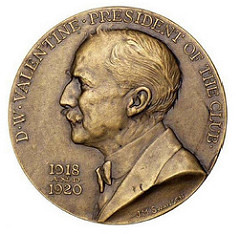 "I was delighted at the E-Sylum treatment of the Daniel W. Valentine Medal of the New York Numismatic Club. He was a prominent early member of NYNC, which had planned to publish his definitive work of Fractional Currency. Although such matters would never have been publicly discussed, Club officers were aware that this worthy dentist was living in reduced circumstances late in his life and made him an honorary member largely to obviate paying dues.
"I was delighted at the E-Sylum treatment of the Daniel W. Valentine Medal of the New York Numismatic Club. He was a prominent early member of NYNC, which had planned to publish his definitive work of Fractional Currency. Although such matters would never have been publicly discussed, Club officers were aware that this worthy dentist was living in reduced circumstances late in his life and made him an honorary member largely to obviate paying dues.
"His definitive fractional currency book was published through the generosity of member F.C.C. Boyd. Valentine's in-depth study of U.S. Half Dimes was published in 1937, immediately before its author's death. In it, he avoided any references to rarity and value which he feared would aid dealers in setting retail prices... I wonder what he would have thought of slabbing!
"David T. Alexander
Past President NYNC"
To read the earlier E-Sylum article, see:
THE VALENTINE MEDAL
(https://www.coinbooks.org/v25/esylum_v25n07a08.html)
THE BOOK BAZARRE
Woodward's "D" Sale
Dave Hirt writes:
"I have not written for a while, however on a snow bound day I decided to spend the time in my library. Wow. Four hours went by so fast I could believe it!
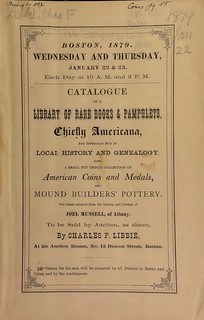 "One item I looked at was W E Woodward's "D" sale held on Jan. 22 & 23, 1879. Woodward always claimed that he assisted
Joel Munsell of Albany in cataloging this sale. I believe that Munsell cataloged the rare historical books, and WEW the coins &
medals.
"One item I looked at was W E Woodward's "D" sale held on Jan. 22 & 23, 1879. Woodward always claimed that he assisted
Joel Munsell of Albany in cataloging this sale. I believe that Munsell cataloged the rare historical books, and WEW the coins &
medals.
"However in finding references to this sale I could not find any listings under Woodward or Munsell names. Finally I found the sale listed under the Libbie auction house.
"This made me wonder... For early catalogers, what determines how they are listed, the cataloger, or the auction house? What do our readers think? My copy of the Woodward "D" sale is in a bound volume of Woodward sales that came from the Armand Champa library."
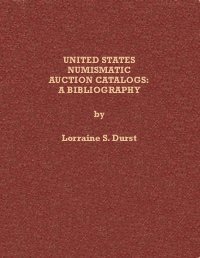 In many cases it's easy to determine the cataloguer and the auction house. Sometimes, only one or the other is apparent. Printed bibliographies are limited in space, so the author generally chooses just one as the primary ordering scheme. Most numismatic auction bibliographies list sales by cataloguer, and that's generally a good thing. But not all, and that can sometimes be helpful. I found Lorraine Durst's book United States Numismatic Auction Catalogs: A Bibliography useful because it lists the sales by auction house. When I was researching the early history of the Western Pennsylvania Numismatic Society this arrangement helpfully showed together all of the numismatic sales held in Pittsburgh, and the cataloguers were all WPNS members.
-Editor
In many cases it's easy to determine the cataloguer and the auction house. Sometimes, only one or the other is apparent. Printed bibliographies are limited in space, so the author generally chooses just one as the primary ordering scheme. Most numismatic auction bibliographies list sales by cataloguer, and that's generally a good thing. But not all, and that can sometimes be helpful. I found Lorraine Durst's book United States Numismatic Auction Catalogs: A Bibliography useful because it lists the sales by auction house. When I was researching the early history of the Western Pennsylvania Numismatic Society this arrangement helpfully showed together all of the numismatic sales held in Pittsburgh, and the cataloguers were all WPNS members.
-Editor
"Recent posts on the Fernand David sale brought a good memory to me. I have a copy of the Schulman 1930 sale. I showed it to my very good friend, the late Phil Carrigan. He got quite excited over the rare American coins and medals described therein. Later he was able to obtain a copy for his own collection. I am sure that there would be some interesting stories of how those rare American items got to Europe in the 19th century."
To read the earlier E-Sylum articles, see:
FERNAND DAVID (1861-1927)
(https://www.coinbooks.org/v25/esylum_v25n04a19.html)
GADOURY ANNOUNCES FERNAND DAVID SALE
(https://www.coinbooks.org/v25/esylum_v25n05a22.html)
NOTES FROM E-SYLUM READERS: JANUARY 30, 2022 :
J. Schulman Sales of Fernand David American Collection
(https://www.coinbooks.org/v25/esylum_v25n05a12.html)
TV Episodes with Coins in the Plot
Howard Berlin writes:
"I just finished watching an old episode of Banacek (To Steal a King
) where a coin dealer deposits a priceless collection in a hotel vault, which is later stolen.
"It caused me to remember several other of my favorite shows (detective/drama) where numismatics was part of the plot. These were:
"Hart to Hart – To Coin a Hart
- a rare coin dealer is killed during a robbery
"Perry Mason – The Case of the Wooden Nickels involving counterfeit but rare Confederate coins
"Perry Mason – The Case of the Captain's Coins
"Matlock – The Thief.
The episode shows a $20 St. Gaudens double eagle and a 1936 proof set
"Hawaii Five-O - "The $100,000 Nickel with a 1913 Liberty nickel."
In the great-minds-think-alike department, within an hour of receiving Howard's email I received another on the same topic from Robert Leuver, former Director of the Bureau of Engraving and Printing and also a former Executive Director of the American Numismatic Association. -Editor
Bob writes:
"2022 PRIME VIDEO TV SERIES ONE (6 or 7 episodes), REACHER,
February 2022
"My wife, Hilda, and I watched this short series the week of February 7, 2022.
"Counterfeiting US currency was the theme. It was a gripping and enjoyable series
"TV series exposed in second episode that the theme was counterfeiting of US paper money/currency. Multiple murders, etc. A Georgia Corp in Markum, Georgia, was involved in counterfeiting. In episode next to last, the counterfeiting was explained in detail. Acquire one dollar US banknotes, wash them in a special solution to remove ink; then carefully dry. iron blank paper (75% cotton, 5% flax actually), wherein you have genuine US paper currency stock, and then print $100 banknotes on both sides. Use an old (dated) note series as that series would not have current anti counterfeiting devices (color, printed strip imbedded in paper, color changing image, etc.).
"The technical difficulty is the millions of $1 notes that had to be harvested, and the millions of $100 banknotes printed and sent to distributor in Venezuela. Otherwise, the theme was genuine and intriguing."
And this week I came across this description of a Seinfeld episode: "... while Estelle tries to get George to take a civil service test, Frank rambles on about his silver dollar collection." -Editor
To read the complete article, see:
18 Frank Costanza Moments That Steal The Show On "Seinfeld"
(https://www.buzzfeed.com/anthonyorlando52/best-frank-costanza-moments-from-seinfeld)
Query: Deutschland Ballast Relic Medal
Tim Conway of
Albany, NY writes:
"I recently discovered a Medal that reads MADE FROM THE U DEUTSCHLAND
BALLAST BALTIMORE, JULY 9TH 1916 on the front of the oval silver medal. Also on the front within the center is a vessel with the sun setting on the left side. On the back of this medal is the inscription FROM THE FIRST TRANSATLANTIC TRIP FOR THE BENEFIT OF THE PRISONERS OF WAR IN SIBERIA. The dimensions of the medal are one (1) inch right to left (width) by one and one-half (1 1/2) inches from top to bottom. The medal is attached to a black leather strap that is approximately three and three-quarters (3 3/4) inches long by one-half (1/2)inch wide.
"The medal appears to have been made by the Interboro Medal and Badge Manufacturing Co. of New York City. The medal appears to be stamped or inscribed on the front lower right area with Interboro M&B CO.
"I have only been able to research limited information regarding this medal and have not seen anything on the internet that resembles this WW1 medal."
Interesting. Can anyone help? -Editor
The "Winged Roosevelt" Pattern
This one really made my day. Thanks to Wayne Pearson for passing this along! -Editor
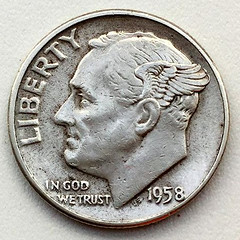
"To increase public acceptance of a new coin style, the Mint experimented with preserving aspects of the prior design in the new one. Here's a rare "Winged Roosevelt" pattern."
To read the complete article, see:
To increase public acceptance of a new coin style, the Mint experimented with preserving aspects of the prior design in the new one. Here's a rare "Winged Roosevelt" pattern.
(https://www.reddit.com/r/coins/comments/hm83y3/
to_increase_public_acceptance_of_a_new_coin_style/)
M. C. LILLEY & COMPANY
Carol Bastable writes:
"I found a seller on eBay that has a glut of Masonic penny dies as well as all sorts of dies and stamps for various fraternal organizations, military, medals, advertising, and jewelry making items. There were so many items that I never got to the end after scrolling through them for 45 minutes to an hour. This could be a real find for some of the readers."
Thanks. Here's one sample lot Carol pointed out. -Editor
From the archives of MC Lilley, this listing is for an antique stamping die used to make a Masonic Penny for the following Royal Arch Mason Chapter:
Chapter: Rosedale Chapter No. 95
Location: Rosedale, Kansas
S/N age of die: S/N #2905 dates to 1916-1917
Dimensions: 1 ? maximum diameter x 1 ¼ high
Weight: 7+ oz
Condition: Excellent
To read the complete lot description, see:
1916 ROSEDALE KS Chapter 95 RAM MASONIC PENNY Stamping Die * MC Lilley
(https://www.ebay.com/itm/373424446267)
To view the seller's other items, see:
https://www.ebay.com/sch/auctionplanner/m.html?_nkw=&_armrs=1&_ipg=&_from=
Here's some more information about M. C. Lilley & Company. Is anyone aware of the location of their archives? Clearly the old dies and stock have been sold off, but do company records survive in some University or historical society holdings? -Editor
From modest beginnings in 1864, the M. C. Lilley & Company eventually became world renowned as manufacturers of regalia. The company was founded by four leading citizens of Columbus, Ohio all veterans of the Civil War. They were Mitchell Campbell Lilley, John Siebert and brothers, Charles and Henry Lindenberg. All four men were members of the Odd Fellows and published the Odd Fellows Companion
, a publication of the fraternal organization. Through this newsletter they received many requests from people wanting to purchase regalia. They decided to produce the items themselves and thus a company was born. The Lilley Company produced swords, banners, flags, emblems and uniforms for fraternal societies and organizations such as the Masons, Odd Fellows, and the Knights of Pythias, as well as police and military uniforms. Beginning in a small building at 253 South High Street, the Company eventually grew to occupy several large buildings at the corner of East Long and North 6th Streets.
Items produced by the Company can be roughly dated by the changes in the Company's name. From 1865 to 1881 the name was the M. C. Lilley & Co.
. In 1882 after the death Of Mr. Lilley the name changed to The M. C. Lilley & Co.
and remained such until 1925 when it was shortened to The Lilley Co.
. The Company was merged with the Henderson-Ames Company of Kalamazoo, Michigan in 1931 and the name was changed to The Lilley-Ames Company
until 1951 when it was sold to C. E. Ward. It operated under the name of Lilley Ames Co.
until 1953. It went out of business in 1965.
I was unfamiliar with this company, but it was quite the business in its day. The postcard describes the company as "The World's Famous Regalia House" and supplier of "Military & Secret Society Goods".
I found no mentions of M. C. Lilley & Co. in our E-Sylum archives and only a handful of mentions on the Newman Numismatic Portal, including an October 2015 Numismatist article by Dave Schenkman. Can anyone point us to more information? One possible source could be the below dissertation, which indicates there were multiple regalia manufacturers serving the secret societies. -Editor
Dave Schenkman adds:
"I've seen quite a few dies such as these on eBay over the years. Some types are more collected than others. In the 1960s thousands of old trade token dies from a Philadelphia die sinker (Quint) came on the market. I purchased the Virginia token dies."
To read the earlier E-Sylum article, see:
Fraternal Regalia in America, 1865 to 1918: Dressing the Lodges; Clothing the Brotherhood
(http://rave.ohiolink.edu/etdc/view?acc_num=osu1224791800)
To read the complete article, see:
M. C. Lilley & Company building postcard image
(https://digital-collections.columbuslibrary.org/digital/collection/ohio/id/13832)
WHERE TO CATALOG THOSE 2021 DOLLARS?
Those coins commemorating the 1921 Morgan and Peace dollars under the 1921 Silver Dollar Coin Anniversary Act present a quandary for cataloguers - where exactly do they fit in the American numismatic body of knowledge? Dennis Tucker of Whitman Publications tackled the topic in a recent Coin Update article. With permission, we're republishing it here. -Editor
If you've read Kenneth Bressett's history of the Guide Book of United States Coins—the recently published A Penny Saved: R.S. Yeoman and His Remarkable Red Book—you know that the Red Book's editors have always taken its content very seriously. The goal is to catalog hundreds of different coin types, spanning centuries of American history, in a logical, easy-to-digest way. The results have to be accessible for the complete newcomer to the hobby, and also valuable for the more advanced collector.
Some modern coin series are fairly straightforward, and decision-making around them is easy. Roosevelt dimes offer a good example. They've had the same design for the past seventy-five years. Each year the Philadelphia and Denver mints produce a few billion dimes for circulation; the San Francisco Mint works its magic making beautiful Proofs, in copper-nickel and silver, for collectors. This many dimes go into Uncirculated Mint sets, that many dimes go into Proof sets. Sometimes there's a novelty in the series, like West Point's two dimes minted in 1996 and 2015. But those happen just once or twice in a generation. By and large, the Roosevelt dime series is steady and predictable.
Older federal coins, and colonial coins and tokens, require more rigorous pondering and analysis of the latest numismatic research. New information can lead to reclassifications; die varieties get discovered and published; mintages and other data can change as government archives and records reveal hidden secrets.
Then there are coins like those minted under the 1921 Silver Dollar Coin Anniversary Act to celebrate the 100th anniversary of the last Morgan dollar and the first Peace dollar.
These coins have made headlines for the past year (and more). One of the big questions in the hobby community has been, Where to list them?
More specifically: Where will they be cataloged in the Red Book?
Are they a continuation of the historic Morgan and Peace silver dollar series?
Are they commemoratives?
Are they bullion?
Or some other numismatic animal altogether?
The 76th edition of the Red Book, which will be released in a few weeks, classifies these coins in the Silver and Related Dollars
section. They're listed as the last entry in that chapter, after the American Innovation dollars.
This is the best place to categorize them.
They're not technically Morgan dollars
and Peace dollars,
even though their designs are very close to the classic coins minted from 1878 to 1921, and from 1921 to 1935, respectively. They were authorized under different legislation. (And that legislation identifies 1921 as the completion of coinage of the Morgan dollar.
) They're not precise copies of the older coins, but, in the words of the Act, honor
them with renditions
of the original designs. (The Mint's artists used modern technology and historical Mint assets to create the new motifs.) They're struck to a different fineness (.999 compared to the older .900), they have a slightly different weight, and they incorporate novel elements such as privy marks.
Furthermore, although they commemorate the original dollars, they're not commemorative coins, as Congress defines them. Since 1996, there's been a legislative limit on the number of commemorative coin programs allowed each year—two, maximum. For 2021, those programs were the Christa McAuliffe silver dollar and the three-coin suite for the National Law Enforcement Memorial and Museum.
They're not bullion coins. They're minted as numismatic products for sale to collectors, quite different from the American Silver Eagles made for precious-metal investment.
So what are they, inarguably? They're dollar coins—thus the Red Book classification within Silver and Related Dollars.
You'll find them on pages 252 and 253 of the 76th edition of the Red Book, almost smack dab in the middle of the volume . . . where they can keep basking in the attention they'll undoubtedly continue to receive!
To read the complete article, see:
Notes Published: Cataloging modern silver dollars—where to put those 2021 coins?
(http://news.coinupdate.com/notes-published-cataloging-modern-silver-dollars-where-to-put-those-2021-coins/)
SS CENTRAL AMERICA MINT BOX OF DOUBLE EAGLES
This press release from NGC describes the careful conservation and cataloging of the last group of coins disbursed from the salvage expeditions to the legendary wreck of the SS Central America. Great coins! -Editor
On September 3, 1857, the SS Central America began a voyage from Panama to New York carrying very important cargo: thousands of freshly minted gold coins from California, desperately needed by New York banks that were facing an economic crisis. Six days later, the ship found itself in the grips of a Category 2 hurricane off the coast of the Carolinas. After three days of struggling with high winds and waves, the ship's crew lost its battle with the storm and the Central America sank, resulting in the loss of more than 400 lives and more than 9 tons of gold.
For more than 130 years, treasure hunters dreamed of discovering the wreck of the SS Central America, which
quickly became known as the Ship of Gold.
When the wreck was finally discovered in the late 1980s, the
process of retrieving its treasure began.
Numismatic Guaranty Company™ (NGC®) is thrilled to reveal to the public the final mystery of the ship's recovered cargo — a box containing $20 gold coins from the height of the California Gold Rush, now certified, preserved and ready to be studied and appreciated by collectors around the world. This video shows the treasure's journey to the NGC grading room: youtube.com/watch?v=fyqmA50cQfE.
California Gold Marketing Group acquired the SS Central America treasure from those who salvaged it from the wreck. It entrusted NGC with the certification of the first coins recovered from the SS Central America, and now the last.
It's the greatest treasure ever found in American history,
says Dwight Manley, Managing Partner of the
California Gold Marketing Group. It's the greatest treasure ever lost in American history. And it's from a magical
period in American history, the Gold Rush, the authentic United States Gold Rush, the biggest one in history.
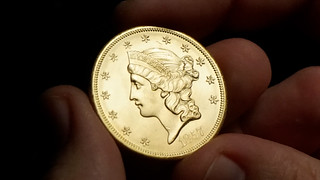 The coins graded by NGC consist of 123 US Liberty Head $20 gold coins, known as Double Eagles. The San
Francisco Mint Box that contained the coins had been transformed into a
The coins graded by NGC consist of 123 US Liberty Head $20 gold coins, known as Double Eagles. The San
Francisco Mint Box that contained the coins had been transformed into a concretion
by the conditions that it
endured during its time on the seafloor. The contents of the box were identified as coins, but their condition was
unknown prior to its recent opening. After professional conservation, many of the coins were found to be of
exceptional quality.
Mark Salzberg, NGC Chairman, praised the condition of the coins, describing some of them as fresh off the die.
Among the most impressive coins discovered in the box was one that graded NGC MS 67 PL, making it the finest
known Prooflike example of an 1857-S $20 gold coin. Another example with exceptional eye appeal graded NGC
MS 67?, which is the highest-graded 1857-S $20 gold coin with the NGC Star Designation. Incredibly, four of the
1857-S $20 gold coins graded NGC MS 67+, indicating that they approach the quality requirements of an NGC
MS 68.
To view a gallery of all 123 coins, which includes primarily 1857-S examples but also 1850, 1851, 1852, 1855-S and 1856-S coins, visit NGCcoin.com/SSCentralAmerica.
The coins certified by NGC were minted with gold mined at the height of the California Gold Rush. It was hoped that their arrival in New York would bolster confidence in the US financial industry, which had been shaken by the announcement of the collapse of the Ohio Life Insurance and Trust Company in August 1857. When the gold failed to arrive, it sparked what has come to be known as the Panic of 1857, which is considered the first worldwide economic crisis.
The discovery of the shipwreck after more than a century of searching resulted in numerous expeditions to
reclaim the lost cargo. Bob Evans, Chief Scientist of the SS Central America recovery efforts, was instrumental in
locating artifacts from the legendary ship, including the box of coins. Once the mineralization was removed from
the coins, Evans says that they look exactly the way they looked in 1857
with Prooflike coins even stacked
together in the box.
![1857_US_G20D_SSCentralAmerica_MS67Plus_A2-11[1]](https://c1.staticflickr.com/1/768/51882281459_69c92446fd_n.jpg) As the coins were extracted from the concretion, each coin's location in the box was cataloged according to row,
stack and the coin's place in the stack. These
As the coins were extracted from the concretion, each coin's location in the box was cataloged according to row,
stack and the coin's place in the stack. These coordinates
(appropriate for shipwreck coins) are indicated on the
NGC certification label: first, A
or B
for the row; next is the number of the stack; and the third number identifies
the coin's place in the stack. Collectors will also appreciate that the NGC certification number for these coins
includes the year 1857.
The certification of the coins from the SS Central America is another example of the role that NGC has been privileged to play in the certification of significant historical artifacts, from coins retrieved from the bottom of the ocean to medals flown to the surface of the moon as well as many others that have captured the hearts of numismatists and earned a place in the history of coin collecting.
You're talking about the end of a great, great story,
concludes Salzberg. It's a world-renowned collection and to
have it come here is just fantastic.
VOCABULARY TERM: HORN SILVER
Here's a short but interesting entry from Dick Johnson's Encyclopedia of Coin and Medal Terminology. -Editor
Horn Silver. A type of tarnish, silver chloride, formed on the surface of silver exposed to hydrogen chloride. Characteristically horn silver is a white to pale-yellow or gray color and in natural state is cerargyrite (AgCl). Removing a tough tarnish like horn silver is difficult, as no chemicals can dissolve it. Extensive horn silver needs to be removed physically, the best is by reverse electroplating. Such reverse plating, however, removes not only the tarnish but also the top layer of silver. Physical removal can also be accomplished by sandblast or abrasive blast, or by light pickling with sulfuric acid. Needless to say, it should only be done by a professional.
Until reading this I'd never heard of either Horn Silver or reverse electroplating. Interesting way to clean a coin or medal, and certainly something that should only be tried by a professional. Is anyone aware of this being practiced today, perhaps at a museum or one of the grading house conservation services?
As for Horn Silver, the Hudson Institute of Mineralogy says the name came about as follows: "This superficial silver ore is polished by desert wind and dust to the dull luster of a cow horn, hence the name "horn silver"." -Editor
To read the complete article, see:
Horn Silver
(https://www.mindat.org/min-11397.html)
To read the complete entry on the Newman Numismatic Portal, see:
Horn Silver
(https://nnp.wustl.edu/library/dictionarydetail/516064)
THE FIRST AMERICAN COIN COLLECTOR MEDAL
American Numismatic Biographies author Pete Smith submitted this article on an interesting medal, the first of a proposed series. Thanks! -Editor
The topic last week was the first coin collectors. This week the topic shifts to the first American coin collector. Who was the first American coin collector? I don't know, but I am familiar with The First American Coin Collector medal.
An item was posted in The Elder Magazine for October 1910, Vol. 1, No. 10. It announced the formation of The American National Token Club.
To this end the National Medal Company of New York City will commence, early in January, 1911, to issue a series of choice individual Tokens for Collectors only. Specially selected by eminent Numismatists, as to subject, charmingly designed and executed, made unique in character by the insertion of the individual subscribers own name and limited in circulation to a
restricted and consecutively numbered issue of each variety.
The article goes on to describe the first issue.
The obverse will present the scene in which child like natives of the Caribbean coast curiously examine a
Piece of Eight
, handed them from his open bounty chest by a typical buccaneer of the Spanish Main, whose rakish Caravel is seen in the offing.
Elder should be credited not just for his skill at promotion as for his skill in creative writing.
A record will be kept and eventually printed of the names, numbers and addresses of all Subscribers. Subsequent tokens will be equally interesting and be designed to form a splendid historical series of enduring fame.
If such a list of subscribers was published, I am not aware of it. Records show that token number 0 was presented to president Theodore Roosevelt. Token number 1, inscribed to Elliot Smith, is preserved in the ANA Museum. Token 2 was inscribed to A. G. Heaton.
Mintage may have included one in gold, twenty-five in silver and up to a hundred in copper. Issue price was $50 for the gold, $3.50 for silver and $1 for copper. I have recorded numbers for about a dozen pieces with the highest numbered 90. My collection includes copper token number 13 inscribed to Albert R. Frey. The silver number 13 has a two-line inscription, ALBERT R. FREY / EDITOR NUMISMATIST.
The token was offered with an ad in the December 1910 issue of The Numismatist. It gave the address of The National Medal Co. as 156 Broadway, New York, Room 64. They also offered An Exquisite New Oriental Token
designed by F. C. Higgins. The company is not known to have produced any other item.
An article in Mehl's Numismatic Monthly for November 1910 identifies the manager of the National Medal Company as Mr. Julius Wielar. Mehl describes him as a gentleman better known to New Yorkers than to the fraternity at large.
That article is the only time the name Wielar appears in the Newman Numismatic Portal.
Examples of the medal are known without an inscribed name. An unnamed silver piece was sold by Stack's Bowers in their August 2020 sale as lot 4121. It realized $144.
A second issue of the American National Token Club was designed as a tribute to John Hull, producer of Pine Tree Shillings. This was scheduled to be issued 60 days after the first. I am not aware that it was ever issued.
Frank Higgins was the first president of the New York Numismatic Club with Albert R, Frey as vice president. Elliot Smith and Thomas Elder were prominent members. Another article could be written about their opposition to Farran Zerbe. This has been mentioned with the discussion of removing Zerbe's name from the ANA award.
The American National Token Club was similar to other promotions that sell medals by subscription. There was no club organization or meetings. It emerged to great promotion and soon receded to obscurity.
Does anyone have more information about these pieces? Do you have one in your collection? What became of the specimen inscribed to Heaton? -Editor
To read the complete lot description, see:
1911 The First American Coin Collector Medal. Silver. Mint State.
(https://auctions.stacksbowers.com/lots/view/3-NM4SN/1911-the-first-american-coin-collector-medal-silver-mint-state)
To read the earlier E-Sylum article, see:
WHO WAS THE FIRST COIN COLLECTOR?
(https://www.coinbooks.org/v25/esylum_v25n07a18.html)
HARVEY STACK'S NUMISMATIC FAMILY, PART 115
Stack's Bowers has a backlog of Harvey Stack's numismatic memoir articles and will continue publishing them. In this one he continues his discussion of auction sales of 1993. -Editor
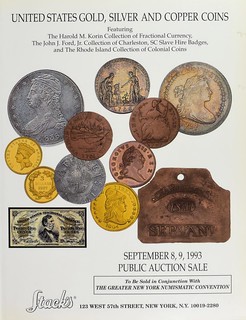 In September 1993 we held a public auction in conjunction with The Greater New York Fall Numismatic Convention, which was added to the schedule because the annual May convention of this group was so popular. Our sale featured 1,300 lots that included United States gold, silver and copper coins, as well as the extensive Harold M. Korin Collection of Fractional Currency, the John J. Ford Collection of Charleston, SC Slave Hire Badges, and the Rhode Island Collection of Colonial Coins. Besides offering items of interest to both beginning and advanced collectors, the specialized collections offered many things that were almost never seen.
In September 1993 we held a public auction in conjunction with The Greater New York Fall Numismatic Convention, which was added to the schedule because the annual May convention of this group was so popular. Our sale featured 1,300 lots that included United States gold, silver and copper coins, as well as the extensive Harold M. Korin Collection of Fractional Currency, the John J. Ford Collection of Charleston, SC Slave Hire Badges, and the Rhode Island Collection of Colonial Coins. Besides offering items of interest to both beginning and advanced collectors, the specialized collections offered many things that were almost never seen.
October brought our sale of a cabinet that many had waited decades to bid on – the Reed Hawn Collection. Stack's was privileged to have helped build this important, high quality collection and we were pleased to be chosen to catalog and sell it at auction. Over the years Reed had been an active bidder and client of Stack's and he was an important buyer of some of the choices and rarest coins offered for sale over the past few decades.
I first met Reed years before when he traveled with his father from Texas to Stack's to add to his collection. He had done his homework before arriving, and the discussions we had were enlightening to us in the office, as well as informative to the growth of his cabinet. To begin, he and his father filled many of the minor sets of coins that were readily available from our stock or in forthcoming auctions. His holdings were complete in small cents, two-cent pieces, silver and nickel three-cent pieces, and nickel five-cent pieces. His dimes were nearly complete, he had 20-cent pieces, quarters from 1837 to 1955, half dollars from 1794 to 1947 and silver dollars from 1794 to 1935. Among the silver dollars were six different varieties of rare Gobrecht dollars – one of the most complete sets we had ever offered for sale.
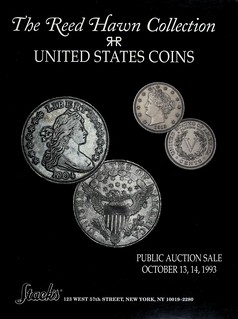 Highlighting the 1993 Reed Hawn collection sale were two extreme rarities: the Mickley 1804 silver dollar and a 1913 Liberty Head nickel. These were the stars of Reed's collection, pieces that always attracted a huge amount of attention and publicity when they were offered for auction. He also owned the famous 1842 Small Date quarter, the highlight of his Liberty Seated quarter collection. Though this collection was not complete, he had many of the greatest and choicest coins starting with the first year of issue. Unfortunately, he was not always able to find a coin of high enough quality, in Mint State or Proof, to satisfy him and match the other dates and mints in his growing collection.
Highlighting the 1993 Reed Hawn collection sale were two extreme rarities: the Mickley 1804 silver dollar and a 1913 Liberty Head nickel. These were the stars of Reed's collection, pieces that always attracted a huge amount of attention and publicity when they were offered for auction. He also owned the famous 1842 Small Date quarter, the highlight of his Liberty Seated quarter collection. Though this collection was not complete, he had many of the greatest and choicest coins starting with the first year of issue. Unfortunately, he was not always able to find a coin of high enough quality, in Mint State or Proof, to satisfy him and match the other dates and mints in his growing collection.
Reed Hawn also bought original Proof sets, starting in 1858 and into the 1880s, and then had a number of original sets in the Barber series. Because each coin in these original sets were so beautiful. Reed suggested and we agreed to offer these exceptional Proof pieces individually. In that way, those who specialized in certain denominations could take advantage of this great opportunity. We found many buyers were excited to have the sets broken up and this decision was well rewarded by the results of the sale.
Though Reed Hawn favored the minor coins and silver issues of the United States for their beauty and eye appeal, he did acquire some U.S. gold coins and these were also presented in the auction. Reed had a complete set of gold dollar and an extensive run of $3 gold pieces, highlighted by a superb 1876 Proof. He had a complete set of Indian eagles in outstanding Proof or Mint State condition.
Also offered were some rolls of later date Indian Head cents, Buffalo nickels, Roosevelt dimes, Washington quarters, Liberty Walking half dollars, and some Morgan dollars. Some were complete rolls, others had one or two pieces missing from when Reed would search each roll for the best one he could find.
Reed Hawn was a dedicated collector who traveled numerous times to attend Stack's sales and to attend conventions nationwide. He was referred to us by Amon Carter, Jr., Thomas Law and other collectors that he came to know from Texas. We were always happy to provide guidance and do anything we could to help him advance his collection. He told us that it was the personal attention that we gave him that made him a better collector and led him to consign his cabinet to us. For decades before and after, we were close friends and he was indeed a pleasure to work with. After he sold his collection, he still attended conventions and auctions and for many years he was a member of the Commemorative Coinage Committee of Congress and his vast experience provided numismatic guidance on the designs and issuances of many of our coins.
In the final month of the year, we were pleased to offer a benefit auction for the American Numismatic Society's 135th Anniversary Gala, a sale of over 1,700 lots from donors and consignors. There was very active and enthusiastic bidding on the floor during the Gala for the many treasures that had been consigned and the sale was a great success with the proceeds going to the Society. After the sale was over, my son Larry and I received a large round of applause from the audience for our contributions to the success of the Gala.
A week later, on December 8, Stack's was pleased to offer 1,148 lots of Ancient and Foreign Coins of the World, a sale held in conjunction with the New York International Numismatic Convention. It was a great way to close out 1993, and it had been another important and memorable year for the Stack family.
To read the complete article, see:
Growing up in a Numismatic Family: Part 115
(https://www.stacksbowers.com/News/Pages/Blogs.aspx?ArticleID=growing-up-in-a-numismatic-family-part-115)
To read the earlier E-Sylum article, see:
HARVEY STACK'S NUMISMATIC FAMILY, PART 114
(https://www.coinbooks.org/v25/esylum_v25n06a16.html)
MARTIN PURDY INTERVIEW
E-Sylum contributor Martin Purdy of New Zealand was interviewed by a reporter visiting a local club event. Here's an excerpt. -Editor
A lifelong journey of explorations is how many stamp and coin collectors describe their passion. It often began early in life with a small bag of coins collected or inherited from relatives combined with a healthy dose of curiosity and speculation about the origin and journey of these simple treasures.
Many find they are able to combine coin collecting with other interests such as history or languages. A number of lower North Island collectors of coins, medals, banknotes and tokens gathered in Levin recently to natter about their finds.
Martin Purdy from Upper Hutt grew up in Levin and graduated from Horowhenua College.
His family came here from England when he was a child and had among their possessions a pocketful of small coins, which set him on the journey of a lifetime collecting coins.
He is a member of the Royal Numismatic Society and compiles catalogues for it on New Zealand medals.
He combined an early interest in languages with his hobby of collecting foreign coins.
"I prefer the coins that have been in circulation," he said.
"I read all the books on coins the Levin library had and once I was working – as a translator – I bought copies of these books," he said.
"Books are the best source for information. Not everything is online."
Today he researches and catalogues and spent years editing the Numismatic Society's Journal, which comes out once a year.
He expects his current project, cataloguing New Zealand's medals, to take 10 years.
Martin is editing a multipart edition of the "Morel" catalogue of New Zealand commemorative medals. -Editor
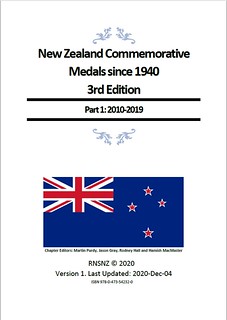
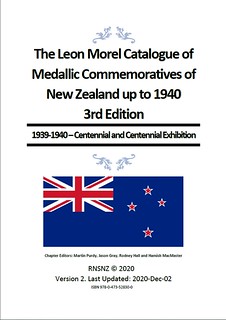
Martin adds:
"We had 100 copies of each of the three available chapters of the Morel book (1920s, 1930s, 1939-40 Centennial - 64, 64 & 100pp respectively) printed in colour by request. Not sure what international postage would be but I'd be happy to make enquiries if anyone was interested."
To read the complete article, see:
Coin collecting: a lifetime adventure that sometimes leads to a dream job
(https://www.nzherald.co.nz/horowhenua-chronicle/news/coin-collecting-a-lifetime-adventure-that-sometimes-leads-to-a-dream-job/LTSTSA2TDNT73ACB32D35W3UFY/)
To read the earlier E-Sylum articles, see:
NEW BOOK: NEW ZEALAND MEDALS 1939-40
(https://www.coinbooks.org/v23/esylum_v23n36a05.html)
NEW BOOK: NEW ZEALAND MEDALS, THIRD EDITION
(https://www.coinbooks.org/v23/esylum_v23n49a04.html)
THE BOOK BAZARRE
DON EVERHART'S CAREER IN COINS, PART 4
With permission, we're republishing excerpts of former U.S. Mint Sculptor-Engraver Don Everhart series published by CoinWeek beginning in April 2018. -Editor
On January 4, 2004, after a 5 am wake up call, a hurried breakfast, a 20-minute drive to the train station, an hour on the R5 from Exton, and a 10-minute walk through the darkness and rain in Philadelphia, I rounded the corner of Arch St. and 5th and saw the United States Mint for the first time. It was well-illuminated and looked to be a welcome respite from the winter gloom around it.
But I can't say I was thrilled to be starting this new phase of my career. I am a freelance artist at heart, and the thought of an everyday nine-to-five job really didn't sit too well with me. How was I going to maintain my daily regimen of cycling? Was I going to be permitted to be creative?
Even though I had a stereotypical and not-quite-positive idea of what a government position would be like, I decided that I had to make the best of it. At the time I had no idea that the job would be the very opposite of what I expected.
After going through security at the employee's entrance of the United States Mint, I was ushered up to the third floor and the Sculptors Studio. I had already met John Mercanti and Donna Weaver, both staff engravers, when I had my initial interviews the year before. I also knew Charles Vickers and Norm Nemeth previously from my six years of working with them at The Franklin Mint.
I noticed that the corner cubicle was open for me! It had windows on both sides and was at the front of the building. Wow, I thought, they must hold me in high regard to give me the prime spot in the Sculptors Studio!
I found out rather quickly and to my chagrin that when it was cold outside this spot was FREEZING! I can remember Donna wearing a coat and gloves one winter day using masking tape on the windows to keep the chill air from leaking in.
Conversely, in the summer months, it was stifling. We would have four or five fans going at once. The building is made of granite and holds the cold in the winter and the heat in the summer. The windows in the studio faced south.
I began in my new position by cleaning dies, changing dates on pennies and nickels, and started working up some designs. John, who was in charge of handing out sculpting assignments, gave me the California State Quarter to sculpt! I couldn't believe that I was actually sculpting a coin to be circulated in the very successful 50 State Quarters program.
John also gave me the reverse of his Jackie Robinson Congressional Gold Medal design to sculpt. I still appreciate the guidance John gave me while he was the Chief Engraver of the United States Mint.
I worked for about a year developing designs, none of which were chosen. I thought were good enough, but, for whatever reason, they weren't making much of an impression on the CFA (Committee For Fine Arts) or the CCAC (Citizens Coinage Advisory Committee) in Washington, DC.
One day I conveyed my dismay to Dave Puglia, who was Acting Plant Manager at the time. He told me, Don't worry, you are going to get designs chosen, and they will come in bunches.
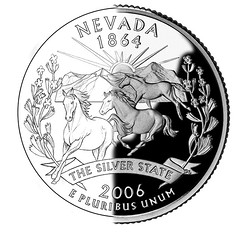 I wasn't so sure about that, but about two weeks later I found out my Nevada State Quarter design was the top pick of the committees! Within a week my Benjamin Franklin Founding Father Commemorative obverse design and my Coretta Scott King and Martin Luther King Congressional Gold Medal obverse design were also chosen.
I wasn't so sure about that, but about two weeks later I found out my Nevada State Quarter design was the top pick of the committees! Within a week my Benjamin Franklin Founding Father Commemorative obverse design and my Coretta Scott King and Martin Luther King Congressional Gold Medal obverse design were also chosen.
Now I felt like I belonged.
To read the complete original article, see:
Don Everhart: My Career in Coins, Part 2 – The United States Mint
(https://coinweek.com/editors-choice/don-everhart-career-in-coins-part-2-the-united-states-mint/)
To read the earlier E-Sylum article, see:
Don Everhart's Career in Coins, Part 3
(https://www.coinbooks.org/v25/esylum_v25n07a19.html)
WAYNE'S NUMISMATIC DIARY: FEBRUARY 20, 2022
This past Tuesday was the night of my Northern Virginia numismatic social group Nummis Nova. Our host was Steve Bishop. He'd made a dinner reservation for us at the Public House Kitchen & Brewery on Battle Street in downtown Manassas. It was a cold night and I found street parking a couple blocks away. Most of our group of eight were already seated including Steve, Mike Packard, Jon Radel, Chris Neuzil. I took an open seat at one end next to Daryl Haynor and across from Tom Kays. A few minutes later Julian Leidman completed our number.
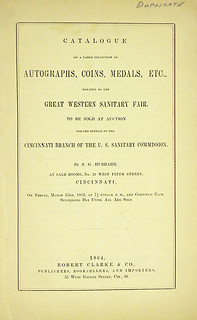 The place was small but packed with diners. Julian and I were the last to place orders. As usual some coins started circulating around the table.
I didn't have much to show this time, just an item I'd just added to my ephemera collection - a catalog of items (including numismatic lots) sold to raise funds at the 1864 Great Western Sanitary Fair in Cincinnati. This will go in my Civil War numismatica binder.
The place was small but packed with diners. Julian and I were the last to place orders. As usual some coins started circulating around the table.
I didn't have much to show this time, just an item I'd just added to my ephemera collection - a catalog of items (including numismatic lots) sold to raise funds at the 1864 Great Western Sanitary Fair in Cincinnati. This will go in my Civil War numismatica binder.
From a recent Kolbe & Fanning fixed price offering, the catalog is
"Notable for including what is thought to be the earliest public offering of a Confederate Treasury Note for sale: Lot 771, a Confederate Treasury Note, fifty dollars, new issue,
which was donated by none other than Major General William Tecumseh Sherman. The Committee on Coins and Autographs of the Great Western Sanitary Fair included notable collectors Joseph Zanoni and Thomas Cleneay. One of the earliest Cincinnati coin auctions."
While the fare was mostly bar food there were several entrees and appetizers to choose from. When the food began arriving it all looked and tasted great. I shared a moment from my drive home after our January meeting in Vienna, VA. I was stopped at a traffic light and noticed the lighted sign atop the office building in front of me with the letters "NADA". Real conversation in my head:
"NADA? What's that?
"Oh, it's nothing..."
Steve's Stuff
Steve Bishop collects a number of things including U.S. silver dollars, tokens, and Russian coinage. He had some of each at the meeting and provided these photos. Thanks! All were nice, but I think my favorite is the Half Cent token.
Tom Kays: The Rebel Coin Shop
Here's Tom's Third-Person account of the evening and a great account of a nearby local landmark.
Here is a composite picture of the February 2022 Nummis Nova crowd with Tom behind the camera and Julian still en route to Olde Towne Manassas from Maryland.
At my end of the table I saw some fine numismatic items passing in review including a PCGS Proof 66 Red-Brown 1872 Two-Cent-Piece, and PCGS MS-64 1882 Brown Indian Head Cent, several ANA certified Morgan dollars, an 1837 Hard Times Token (HT-73) Half Cent of Copper in NGC MS-63 Brown, an 1890-CC Proof-Like dollar, and a Q. David Bowers provenance, 1863 N. O. Underwood, ‘good for five-cents' Civil War Token from Dedham, Tennessee in PCGS MS65 Red-Brown.
In addition to Wayne's ephemera, I brought a Henry Chapman provenance, copy of Robert A. Vlack's, Early American Coins, Second Edition from 1965, which brought smiles to folks on the left side of the table in reminiscing about how it was that rare colonials cost so little back in the day.
Clockwise from left: Jon Radel, Chris Neuzil, Mike Packard, Steve Bishop. Daryl Haynor, Wayne Homren
Speaking of reminiscing, this restaurant/microbrewery is directly next door to one of Tom's old hangouts. The Rebel Coin Shop, across Battle Street from the Rexall Drug Store, and around the corner from the Five & Dime was where all the local relic hunters back since the 1970s would bring whatever they just dug, from the blitzkrieg of development engulfing Union Mills/Centerville/Manassas/Fairfax Station and all the Civil War camps nearby, where proud soldiers wearing fancy dress uniforms from their State militias would drill, camp, and lose every kind of rare accoutrement while living muddy and rough, awaiting action along the Bull Run in 1861 and a bit more bedraggled they would be back again in 1863.
Thousands of amazing relics including jaw-dropping coins were brought in, just next door back last millennium, and shown to the regulars in Jimmy Wilson's coin and relic shop. Experts in every type of historic artifact including coins, buttons, bullets, explosive ordinance, glass, military insignia, as well as, printing, whittling, moonshine, and even more arcane historic specialties could be found there.
On any given Saturday one would find respected book authors, local celebrities, annoying little kids who grew up to become numismatists, serious collectors, quietly successful diggers still covered in red Virginia clay with treasures to behold, tourists from up North who just happened to see the shop and wanted a souvenir, and Manassas locals who had time on their hands, who would crowd into the tiny shop amid ammo cases filled with Minnie balls to swap stories and ID relics.
Imagine an old black and white movie of a bunch of codgers sitting around a pot-belly stove, telling tall tales in the old-time general store, the only show in town. That is what Tom remembers was right next door to our dinner place, back when Manassas was still a small and somewhat depressed, historic southern town, before 21st century gentrification, an influx of microbreweries, and closure of a little relic shop the likes of which is not to be found again.
Everything I have is for sale
In commerce everything has a price. On the way out the door a question prompted Julian to remark that his motto is "Everything I have is for sale." That reminded him of the time a fellow dealer visiting his shop put that to the test.
"You'll sell anything?"
"Sure, for the right price."
"How much for your pants?"
A deal was reached for $60. Julian said, "I had a long jacket that day; it wasn't that cold and my car was just around the corner. I had to pick up my sister on the way home though, and she brought a friend but nobody seemed to notice."
If anyone tells you numismatists don't have a sense of humor, they're hanging with the wrong crowd. None of us could top that story and we headed our separate ways, all wearing pants as best I could tell. 'Til next month, everyone.
MORE ON THAT 1792 INDIAN PEACE MEDAL
Sorry for the delay in publishing this note from reader Dave Fegley regarding a medal briefly discussed earlier. I ran out of time to handle it last week. -Editor
Some thoughts on the 1792 dated oval GW medal sold by Thomaston Place Auction Galleries....
At first glance the medal does not necessarily match the script layout of known authentic medals. Nor does the suspension device. It may be possible to identify the punchmark on the attached suspension ring to the maker. The general subject matter is consistent with other GW medals.
From a technical standpoint the medal itself seems to be constructed in the proper four piece manner, being two thin silver/copper alloy sheets that has been silver plated and held together with a separate rim. I will consider at this point the attachment for the chain has been added at a later date over an existing ring or a repair/replacement of a broken suspension ring. The size of the medal is within the realm of known authentic medals.
Artistically speaking the Thomaston
medal seems to exhibit a level of esoterica that I would
expect on an authentic medal or from an artisan familiar and practiced with such period
embellishments.
Alan Weinberg commented on the quality of engraving being above average of what is
normally seen for a bogus
medal. I remembered reading a dissertation of an unknown 1792
burial medal he had discovered and purchased some time ago. He did a good job describing
the associated tells
of a burial medal that led to him considering it authentic. It gives hope of
new discoveries being possible -
https://nnp.wustl.edu/library/ImageDetail/510941
I have to agree it is rather well engraved and it could be argued that it is on par with other known authentic medals. The 1793 Joseph Richardson medal used as an example is certainly among the finest engraved medals known, but there are four different punches known on authentic medals (IL,JL,JW and JR) and many unmarked implying there are at least four different engraving styles or levels of expertise that can be expected, especially in 1792 and early 1793. After the death of Joseph Wright the quality of the engraving improved and can with a high probability be attested to the Richardson shop. These early oval GW medals cannot be disregarded based on level of engraving, but should be evaluated considering construction/ plating techniques and artistic value. If the subject meets what you as an owner or researcher would consider within the realm of an authentic medal the next step would be a focused XRF test to identify certain red flag elements within the sheeting alloy, welds and determination of the silver plating method. If its electroplated its all over right there.
I will use the same 1793 medal previously used as an example of what should be expected
from an authentic medal. Better pictures of both medals can be found at these links.
https://www.liveauctioneers.com/item/119071895_rare-coin-silver-indian-peace-medal-1792
https://coins.ha.com/itm/washingtonia/1793-george-washington-president-oval-engraved-
indian-peace-medal-silver-by-joseph-richardson-baker-174-unlisted-belden-8-/a/1329-3056.s
The 1793 is spectacular and worth a long look. Considering a page from a Spider-Man comic
recently sold for over $3million this medal is way way undervalued.
I will glean all I can from only a couple pictures and attempt to show a few attributes expected
to be present. In the case of this particular medal I don't believe a couple pictures are enough
to authenticate or dismiss it as bogus
.
The pictures I added will lose some clarity and are not taken in the lighting or exact angles
necessary to properly view the esoterica. So consider this a study guide. If you have interest
and a photo editing program on your computer its easy enough to experiment yourself. I
adjusted definition to 100%, increased saturation until light wavelengths begin to separate and
adjusted brightness as I thought necessary. Those of you with an eye for the esoteric may be
able to discern some of the hidden
artwork and portraits. I circled areas of interest in red.
Notice in particular the one at the top of the 1793 and the one under the eagle on the
Thomaston
medal (red arrows) They are very similar. At a minimum notice how some areas
are more reflective than others and have a toning to them. This is the top layer of plating which
proper testing would reveal a coin
silver (90%/10%+ neighborhood}. It is mostly still intact in
the center of the 1793 around where it had a better anchor and away from the edges where it
has been handled. (Like any other 200+ year old plating it is fragile and should not be handled
without gloves. If you look at your fingertips under magnification after handling old plated silver
you will see flecks of silver stuck to your fingers. After awhile it starts to add up and there is a
visible loss of silver plating in those areas). There is a distinct change in reflectivity away from
the center that is not toned
and has a brownish patina. This is the bottom layer of plating that
proper testing will reveal a very pure layer of silver plating that is over a silver copper alloy
sheet. The top layer of coin silver is gone in these areas, but is what would be expected from a
200 year old plated relic of any type.
This method of layered plating allowed for esoteric embellishment at three levels that gave a
three dimensional or sometimes an animated result. Properly understood and viewed it is a
remarkable and complex paradolic art form that was practiced and developed over (at least)
hundreds of years. It is the basis of anti counterfeiting devices built into coin dies, etc.
It is possible to match this artwork across mediums to an individual artist. The complexity of
these images means they were not one offs
, but used over and over by the same artist.
Also take note of the areas circled in yellow. If you zoom in you should be able to make out
what appears to be tiny numbers, letters and symbols. Notice that most of the scratches are
actually under the plating. This is the method used to prepare the surface for plating while
creating the base of the shaded imagery. This is present on both medals, but the plating on the
Thomaston
medal is in much better condition and harder to determine whether it has been
stored better than the 1793 or it is not as old.
Be aware these embellishments require very specific light, magnification and viewing angles to properly view. It's a learning process that may take years to develop and thousands of hours of study to begin to recognize particular artist's traits. Don't be discouraged if it doesn't come to you right away. The couple pictures I included really aren't the greatest or meant to be some type of definitive explanation. I am just pointing out areas of interest for your own study. Relics that are in hand and pictures taken from proper angles etc. yield much better results. The oval GW medals in particular are spectacular works of esoteric art. Acknowledgement and study of this art form has the potential to add extreme value to these and other hand engraved relics.
In my opinion the medal in question has too many positive attributes to dismiss out of hand
and should be submitted for a proper metallurgical study. It's not enough to just say this one
isn't as pretty as that one
which is about all you get out of the usual suspects as far as a
technical dissertation or better yet extraordinary provenance
(of former collectors). With no
real history other than that. I always wonder how it was even possible that a relic as beautiful
and at one time as revered as a GW Peace Medal lost the identity of its original recipient and
its true history (especially the large and midsize)
Regardless of my opinion or anyone else's, the Thomaston
medal sold for around $8000.
That certainly is not a bogus price for a bogus
medal. The bidders must believe it has a shot
at being authentic or appreciate the study of esoterica. These early oval GW medals fall into a
class of their own. They are so scarce that the study of previously unknown medals such as
this should be approached with the belief that it may be authentic and left to engraving
scholars and modern forensics.
To read the earlier E-Sylum articles, see:
NUMISMATIC NUGGETS: JANUARY 9, 2022 : 1792 Indian Peace Medal?
(https://www.coinbooks.org/v25/esylum_v25n02a20.html)
NOTES FROM E-SYLUM READERS: JANUARY 16, 2022 : On That 1792 Indian Peace Medal
(https://www.coinbooks.org/v25/esylum_v25n03a17.html)
THE LAST COINS OF INDEPENDENT SYRACUSE
The article from the Künker auction house discusses three of the last coins issued by independent Syracuse. -Editor
The Last Coins of Independent Syracuse
The second part of Künker's Spring Auction Sales is dedicated to antiquity: we present three specimens that are among the last coins that were issued by independent Syracuse while the Romans besieged the city and Archimedes built his defense machines.
The year is 214 BC. Hannibal keeps the Romans on their toes. Only two years earlier, he had practically wiped out the Roman army in the Battle of Cannae. It is said that one third of the entire Roman leadership class died in the battle. The ancient world was shaken to its core. This is the only way to explain the fact that even the trading city of Syracuse seriously considered a change of allies. The city had faithfully stood by the side of the Roman Republic since 263 BC. Rome honored this by granting Syracuse a special legal status. The Roman proconsul of Sicily had no power there.
But then old Hiero II died. His grandson Hieronymus ascended the throne, and the 15-year-old found a war hero like Hannibal far more impressive than Roman senators who were losing battle after battle at the time. At the beginning of 214 he sent envoys to Hannibal, and they forged an alliance in his name. Hieronymus planned to expand his own empire in Hannibal's shadow. But before his army, which was assembled in Leontinoi, could start the planned campaign to Messina, Hieronymus fell victim to an assassination. As a result, a civil war almost broke out in Syracuse.
In the foreground, the temple of Artemis, in the background that of Athena, both shared this sacred precinct. Model in the Archaeological Museum of Syracuse. Photo: KW.
Between Peace and War
We tend to forget that – even in antiquity – people with different interests and different values lived in the same cities. Thus, after the murder of Hieronymus, the Syracusans fiercely argued about whether to form an alliance with Carthage or with Rome. Those who backed Rome sought to talk with the Roman consul Marcus Claudius Marcellus. But their efforts did not result in anything. The army in Leontinoi ruined the peace negotiations.
The reason for this was that the young soldiers went on profitable raids throughout the Roman territory, thinking of themselves as being extremely heroic. And the Roman proconsul Marcus Claudius Marcellus obviously could not and would not tolerate this. He ordered his army to attack Leontinoi and his legionnaires took the city by storm. Many Syracusans died defending Leontinoi, and many civilians were killed in the looting that followed. By doing so, the consul naturally aroused the anger of the Syracusans, and the number of those in favor of an alliance with Rome shrunk drastically. An election held in the winter of 214/3 placed two of Hannibal's envoys at the head of the city, and they used this strategic office to open a second front against Rome in Sicily.
A Coin Series to Finance the Fight against Rome
Somewhere in this context, an extensive series of Syracusan coins was issued that don't show a ruler's portrait on the obverse but the most important gods of the city. We can assume that the coins' main purpose was to pay the wages of soldiers so that they could pay for their food instead of stealing it. For a rich and densely populated city like Syracuse, this was the only way to maintain peace while a large army was present.
Accordingly, many different denominations were minted: there were coins of 16, 12, 10, 8, 6, 4 and 2 1/2 litrae, with 0.89g being defined as the standard weight of one litra.
In the context of the Dr Guy Sylvain Paul Bastin Collection, which will be on offer in auction 367 on 6 April 2022, auction house Künker is able to present three different denominations from this series, some of which are extremely rare.
Syracuse. 16 litrae, 214-212. Head of Zeus with laurel wreath to the left. Rv. Nike, pushing a quadriga to gallop. Very rare. Extremely fine. Estimate: 10,000 euros. From Künker auction 367 (6 April 2022), No. 7081.
Undoubtedly, the engraver who created the dies for this 16 litrae piece was among the many particularly gifted artists of Syracuse. The obverse depicts the monumental face of Zeus, for whom the Syracusans had built a temple a little outside the city proper. They worshipped Zeus as Olympios, recalling that priests from Olympia had accompanied the first settlers on their journey into the unknown. Therefore, the reverse presents a victorious quadriga – an allusion that has been known since the beginnings of the city's coinage history and that represents Syracuse's regular participation in the chariot races of the Olympic Games.
Syracuse. 12 litrae, 214-212. Head of Athena to the left. Rv. Artemis, cocking a bow, a hunting dog at her feet. About extremely fine. Estimate: 1,000 euros. From Künker auction 367 (6 April 2022), No. 7082.
The 12 litrae piece was the most frequently struck denomination of this issue. Whereas only three different obverse dies were used to mint the 16 litrae pieces, at least 14 dies were created for the 12 litrae coins, as Andrew Burnett discovered in his die study.
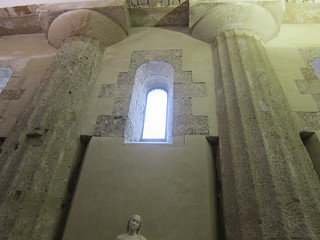 The Cathedral of Syracuse was built into the temple of Athena. The Doric columns are still clearly visible. Photo: KW.
The Cathedral of Syracuse was built into the temple of Athena. The Doric columns are still clearly visible. Photo: KW.
Athena and Artemis were both important deities in Syracuse. Anyone who has ever visited the city will remember how impressive it was to see that the columns of the old temple of Athena are still a visible part of the masonry of today's cathedral. Artemis shared the sacred precinct with Athena. She had an elegant Ionic temple right next to it. This geographical proximity is numismatically reflected by this coin.
Syracuse. 6 litrae, 214-212. Head of Heracles to the left. Rv. Nike, driving a biga to the right. Very rare. About extremely fine. Estimate: 2,000 euros. From Künker auction 367 (6 April 2022), No. 7083.
Nine obverse dies exist for the 6 litrae piece, which shows Heracles on the obverse and a biga driven by Nike on the reverse. A local myth links Heracles to the spring of Cyane, which – although Arethusa is much better known – played an important role in the religious calendar of the Syracusans.
While travelling through Sicily, Heracles is said to have determined how this festival was to be celebrated: the ox that is sacrificed on the occasion should not be slaughtered as usual but be led into the water to drown there. We know from Cicero's speech against Verres that this feast was still celebrated in Roman times.
Archimedes and the Siege of Syracuse
And this brings us to the catastrophe caused by the Syracusans' change of allies. Syracuse relied on its walls, which were considered unconquerable. Marcellus attacked the city anyway. And wasted his men in an unreasonable assault.
At this point, historians always talk about the brilliant mathematician Archimedes, whose war machines are said to have caused many Romans to lose their lives. Apparently, it was easier for Romans to blame the failure and the many deaths on a genius than to deal with the fact that their proconsul had calmly stood by for decades while Syracuse became increasingly unassailable. We can be quite sure that the city walls were the main reason why an immediate conquest of the city failed, however interesting Archimedes' throwing machines and grappling cranes may have been.
The Death of Archimedes – and of Many of His Fellow Citizens
The plan of Hannibal's envoys worked: Rome divided its forces and Sicily became a new supply base for Hannibal. In the late autumn of 213, a large part of the island was in his hands, but this did not keep Marcellus from besieging Syracuse.
He patiently waited until an opportunity presented itself. It was easy to find out when the Syracusans celebrated their festivals. And it was also common knowledge that large quantities of wine were drunk during the annual Artemis festival. Marcellus took advantage of this. He sent shock troops to climb an unguarded section of the massive city wall and to open the Hexapylon gate to let the entire army in. But this was just the first city wall. The actual city center had its own fortifications.
P. Cornelius Lentulus Marcellinus. Denarius, 50 BC. Rare. Very fine +. Estimate: 500 euros. From Künker Auction 367 (6 April 2022), No. 7868 – The depiction of the triskeles behind the portrait of another member of the Marcelli family recalls the conquest of Syracuse, while the reverse commemorates the heroic deeds of Marcus Claudius Marcellus, which he is said to have performed in the battle against the Insubres.
So the siege continued, and it continued until the Carthaginians gradually fell behind throughout Sicily. As soon as the Syracusans realized that they could no longer expect anything from their allies, they sent messengers to Marcellus. But he did not react. He was the victor. And when an Iberian mercenary leader opened him a gate to the island fortress of Ortygia, he sent a small group of soldiers to bring him the Syracusan treasury and let his army loot the rest of the city.
Thanks to Livius we have a detailed description of the horrors that followed. The ancient world did not know international law or the concept of protecting civilians. This is the context of Archimedes' death and the well-known quote: Do not disturb my circles.
Did he actually say that? Who knows. Se non è vero è ben trovato.
Perhaps Archimedes is also a symbol for the Roman grief about having destroyed one of the greatest homes of art and culture that ancient Greece had produced.
The creative power that Syracuse was able to mobilize before the siege, even in 214 BC, is not only shown by Archimedes' inventions but also by the magnificent 16 litrae piece with the head of Zeus, which can certainly stand comparison with the best works of classical art.
Further reading:
Andrew Burnett, The Enna hoard and the silver coinage of the Syracusan democracy. SNR 62 (1983), pp. 5-45
Herbert Heftner, Der Aufstieg Roms. Regensburg (1997), pp. 250-258
Petra Reichert-Südbeck, Kulte von Korinth und Syrakus. Dettelbach (2000)
For more information on the upcoming sale, see:
https://www.kuenker.de/en
ARCHIVES INTERNATIONAL AUCTION 74
Here is the announcement for the February 23, 2022 sale by Archives International Auctions. Bibliophiles - check out lot 466. -Editor
ARCHIVES INTERNATIONAL AUCTIONS OFFERS HISTORIC U.S., CHINESE & WORLD BANKNOTE COLLECTION ON FEBRUARY 23, 2022.
The auction will be held by Archives International Auctions at their offices in River Edge, N.J.
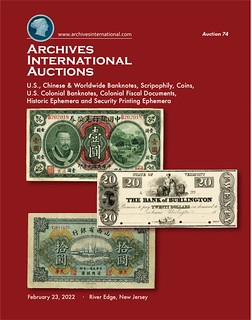 The February 23, 2022, Auction by Archives International Auctions consists
of 732 lots of rare and desirable U.S., Chinese & World Banknotes, Scripophily, Coins, Historic Financial Ephemera, and Security Printing Ephemera. The auction is highlighted by 138 lots of rare and desirable Chinese banknotes. Also included are over 300 Worldwide banknotes; Over 30 lot of historic U.S. Colonial banknotes and Colonial Connecticut fiscal documents; and over 210 lot of U.S. and World scripophily.
The February 23, 2022, Auction by Archives International Auctions consists
of 732 lots of rare and desirable U.S., Chinese & World Banknotes, Scripophily, Coins, Historic Financial Ephemera, and Security Printing Ephemera. The auction is highlighted by 138 lots of rare and desirable Chinese banknotes. Also included are over 300 Worldwide banknotes; Over 30 lot of historic U.S. Colonial banknotes and Colonial Connecticut fiscal documents; and over 210 lot of U.S. and World scripophily.
We are privileged to offer numerous rare and desirable banknotes, historic ephemera and bonds and shares that are rarely seen at auction and include many examples we have never had the pleasure to offer previously, as well as many of the highest graded notes for those varieties
, stated Dr. Robert Schwartz, President of Archives International Auctions. Included in our 74th auction are hundreds of items that will appeal to every level of collector and dealer
.
The auction begins with World Banknotes, from countries Angola to Yugoslavia, highlighted by 137 lots of Chinese banknotes and bonds and 69 lots of Russian banknotes, with all of these from an old-time collection being offered for the first time at auction. Some of the many Chinese banknote highlights include a Bank of China, 1912, $1, Peking
Branch Issue rarity; a 1919, Shanse Provincial Bank, Tientsin
Branch issue discovery note that was previously unlisted; dozens of desirable and rare Chinese high-grade banknotes; and, 14 lots of historic Chinese Bonds. Additional highlights of the World Banknote section include a desirable Lebanon, Banque de Syrie et du Grand-Liban, 1925, 25 Piastres, P-2 banknote rarity; a Mexico, 1897, Banco De Nacional de Mexico, 20 Pesos, highest graded and issued banknote, the only example graded in the PMG census with no examples of this type ever having been offered previously at auction; and, 3 different Mongolia, 1941 issue Specimens from the Commercial and Industrial Bank rarely seen in this format.
Russia is represented by 69 lots of high-grade as well as rare banknotes covering the pre and post Russian Empire time period including private and local Russian banknotes with many rare notes seldom offered in the high grades found in this collection. Some of the many Russian banknote highlights include 5,000 and 10,000 Ruble, 1919 State Currency Notes in high grade; a full assortment of 1918 State Treasury Notes from 1 Ruble to 1000 Rubles in attractive and some very high Uncirculated grades; the 1922 series State Currency Notes include 3 Rubles to 1000 Rubles in various grades, mainly Choice AU to Uncirculated and many other desirable Russian notes. Another major rarity in the World Banknote section is an 1887, Banco Italiano Del Uruguay, Unique Steel Printing Plate of the Banknote Back from the American Banknote Company Archives.
Included in the U.S. section of the auction are 15 lots of Colonial and Revolutionary U.S. period banknotes and fiscal documents from a new find including a group of 1772 and 1773 Pennsylvania Colonial banknotes as well as pre-independence and post-independence New York and Connecticut fiscal documents highlighted by a historic May 6 th , 1776 receipt for Ringwood Iron Works, which manufactured the links for the Hudson River Chain that blocked and limited the ability of the English to sail up the Hudson River during the Revolutionary War.
Also included are hundreds of rare and desirable banknotes with many interesting lots from an old-time dealer's stock as well as numerous items from old estate collections and consignments. The auction also includes 50 lots of Historic Ephemera and Security Printing Ephemera with many desirable and rare items offered.
Some of the many scripophily highlights in the auction include specimen stocks and bonds from numerous well-known banking, finance and tech companies such as Apple; Amazon; Lehman Brothers; the NYSE Group (New York Stock Exchange); Berkshire Hathaway; Bear Stearns and many other well-known and in some cases notorious companies in U.S. financial history.
Additional highlights in the scripophily portion of the auction include many well-known transportation items include a ca.1940's specimen automobile share certificate from Tucker Corp.; a Yellow Cab Company specimen certificate from the 1930's and numerous aviation items including stocks from Cessna Aircraft and Bendix Aviation. World bonds and shares include a historic 1825, Spanish, Real Compania de Guadalajara 100 Pound Sterling Bond that was issued in London and Paris; Fraternal organizations include an 1832 Louisiana, New Orleans Concordia Lodge of Ancient York Masons, No. 3 Bond; numerous mining, navigation and railroad stocks and bonds highlighted by a Montana Territory, Rocky Fork and Cooke City Railway Company 1887 Specimen Bond rarity and many other desirable bonds and shares rarely offered to the public.
Previews will be limited and by appointment only and we will be observing strict safety precautions including the wearing of masks and observing social distancing to protect our team as well as our guests. We will do our best to accommodate anyone who desires additional information and photographs. For questions, please call 201-944-4800 or email info@archivesinternational.com.
The online catalog for the Wednesday, February 23rd, 2022 auction is on Archives International Auctions' website and can be viewed via the Archives International live bidding platform. It can also be viewed as a Virtual Catalog or downloadable Sale 74.pdf on their website. To pre-register for Live Internet Bidding, log on to the Archives International Auctions website, at www.ArchivesInternational.com.
Archives International is now working on their late Winter and Spring 2022 auctions and are seeking quality consignments for future auctions or outright purchase including U.S. and worldwide banknotes, coins, stocks, bonds, stamps, postal history, historic ephemera, and autographs. To sell or consign one piece or an entire collection, please call AIA at (201) 944-4800; or email them at info@archivesinternational.com.
You may also write to Archives International Auctions, at 1060 Main Street, River Edge, NJ 07661, U.S.A. To learn more about Archives International Auctions and the auctions planned for February 23 rd , 2022 auction, log on to www.ArchivesInternational.com.
NUMISMATIC NUGGETS: FEBRUARY 20, 2022
Here's a selection of interesting or unusual items I came across in the marketplace this week. Tell us what you think of some of these. -Editor
Johann Friedrich, 1665-1679.
10 Dukaten 1670, Clausthal. 33.68 g. IOHAN FRIEDRICH Ü D Ù G Ù DUX BRUNS Ù ET LU Ù Geharnischtes Brustbild l. mit umgelegtem Mantel//Ü EX DVRIS GLORIA Ü ANNO Ü 1670 Ü Gekröntes, zwölffeldiges Wappen mit Verzierungen.
Welter -, zu Nachtrag 1701 A; Fb. 565 ("Very rare").
From the Künker spring sale 361. -Editor
To read the complete lot description, see:
Johann Friedrich, 1665-1679. 10 Dukaten 1670, Clausthal. 33.68 g. We
(https://www.kuenker.de/en/auktionen/stueck/313675)
United States of America, George Washington, ‘North Wales' evasion Halfpenny, edge plain, 5.92g/6h (Musante 51; Breen 1294; Baker 34; A 132). Fair £90-£120
Howard Daniel III passed along this lot from the March2022 Dix Noonan Webb sale. Thanks! -Editor
To read the complete lot description, see:
United States of America, George Washington, ‘North Wales' evasion Halfpenny, edge plain,
(https://www.dnw.co.uk/auctions/catalogue/lot.php?auction_id=626&lot_uid=417865)
1811-A French 5 Francs (Napoleon)
Countermarked "PHILLIPS / CHEAP / STORE / NAYADES ST. / N.O."
Some of the counterstruck letters are filled in with a white substance.
Purchased from a seller located in France.
Issuer: S. Phillips
Business/Profession: Dry Goods Store
Date of issue: (uncertain)
Place of issue: New Orleans, Louisiana
Brunk P-449.
Rulau La 104.
Interesting piece from Bob Merchant's eBay offerings. Many merchant counterstamps are difficult to assign to a particular place, and those with a named city are popular. -Editor
To read the complete lot description, see:
1811 5 Francs Counterstamp "PHILLIPS CHEAP STORE / ... / N.O." (New Orleans)
(https://www.ebay.com/itm/134024651078)
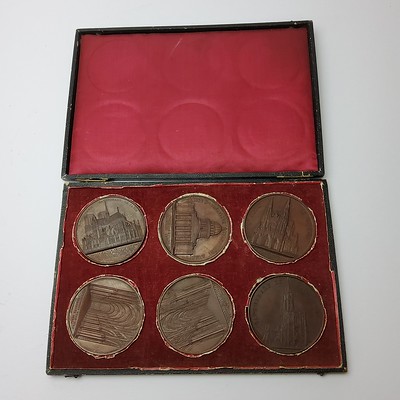 Six bronze Architectural Medals by Jacques Wiener 59 mm. All by J. Wiener of Brussels depicting the outside of the structure in intricate detail on one side and presenting a realistic near three dimensional view of the interior on the reverse. Part of a series of 41 medals by the Belgian sculptor produced in the 1850's and 1860's includes Notre Dame Cathedrale de Paris, Cathedrale de Chartres, Eglise Ste. Genevieve, Cathedrale de Reims, St. Ouen a Rouen and Cathedrale de Strasbourg, original fitted presentation box
Six bronze Architectural Medals by Jacques Wiener 59 mm. All by J. Wiener of Brussels depicting the outside of the structure in intricate detail on one side and presenting a realistic near three dimensional view of the interior on the reverse. Part of a series of 41 medals by the Belgian sculptor produced in the 1850's and 1860's includes Notre Dame Cathedrale de Paris, Cathedrale de Chartres, Eglise Ste. Genevieve, Cathedrale de Reims, St. Ouen a Rouen and Cathedrale de Strasbourg, original fitted presentation box
Nice group - I don't believe I've seen these in a presentation box before. Is this how they were originally issued? -Editor
To read the complete lot description, see:
Six bronze Architectural Medals by Jacques Wiener 59 mm. All...
(https://www.easyliveauction.com/catalogue/lot/
d99a3c36e00466f0c4b3a669ed117b56/0af8d24542e81eb9357e7ef448a6646f/
toys-collectibles-automobilia-memorabilia-including-lot-76/)
Among the most exceptional survivors of this issue, with just 3 finer at PCGS and only 1 higher at CAC. 4.2 million 1939-D half dollars were struck in Denver as the rumblings of World War Two were brewing in Europe. Despite its status as one of the more available mintmarked issues from the middle (1934 to 1940) portion of this series, the 1939-D is scarce at MS-67 and very rare any finer.
Nice numismatic eye candy - beautiful coin and apparently a condition rarity. Offered at fixed price by Stack's Bowers. -Editor
To read the complete lot description, see:
1939-D Walking Liberty Half Dollar. MS-67+ (PCGS). CAC.
(https://www.stacksbowers.com/pages/lotinfo.aspx?LotId=1651114)
(Americana, Fenian Brotherhood, Irish Independence, Bond Notes, Promissory Note). Untitled Bond Note (Novelty). Published c.1890's (?), United States. Novelty re-issue of a rare bond bank note by the Fenian Brotherhood. Engraved bearer bond which was apparently issued in the late 19th century by D. L. Milliken, Advertising Novelties of Malden Mass. Item is over 120 years old and shows some signs of handling and time. Item is not new or in "new" condition. Paper age worn, chip with short closed tear along middle bottom edge, remains overall clean and attractive as a fragile and ephemeral survival.
This item's already been sold. An ad for a Vermont business is printed on the back. See the item description for the image. See also an article elsewhere in this issue about the bonds of this U.S.-based political organization. -Editor
To read the complete item description, see:
Fenian Uprising Irish Independence Movement $5 Bond 1866 Fundraising bank note
(https://www.abebooks.com/servlet/BookDetailsPL?bi=31115504910)
Number 49 for 25 shares to John Lenhart. Datelined San Francisco 1863. Signed by secretary FM Truworthy and president John Cammet. Incorporated August 1863. Located at Lander County, Reese River, N. T. Great vignette of two miners coming out of two tunnels pushing barrows and ore carts. Small 5c and 20c Exchange revenue stamps. Not cancelled. Staining on center right and left edges where it seems to have been taped. One rounded corner. No serious edge, corner or color issues. Original trustees were Cammet, Truworthy, MJ Burke, William Murphy, and S Donnelly. Incorporated on August 18, 1863. The September 18, 1863 Marysville Daily Appeal reported that suddenly the Minnehaha Ledge has suddenly been resurrected. Rock that used to go for $2 to $20 per foot now yields at the rate of $585 silver and $41.75 in gold. Hundreds of other ledges are sure to be resurrected in the same way not that everyone is found to be rich! This stock was sold one month after that article that probably was reprinted in newspapers around California. Is that why this stock was purchased? Background notes on Cammet: from California Legislature in 1855 to insolvent in 1884.
The Minnehaha name caught my eye on this attractive stock certificate in the February 2022 Holabird sale. See John Ferreri's article elsewhere in this issue about the Hiawatha-Minnehaha banknote vignette. -Editor
To read the complete lot description, see:
Minnehaha Gold & Silver Mining Company Stock [130921]
(https://holabirdamericana.liveauctiongroup.com/Minnehaha-Gold-Silver-Mining-Company-Stock-130921_i44228848)
Information on banks in Nevada can be hard to find. But here are three resources that might help. 1) Nevada Sixteen National Banks and their Mining Camps by Warns. Focus on National Bank Notes from the smaller Nevada Banks and the Larger California Banks. 2) 400 California Street. Bank of California. In the early days of the Comstock they were also the bank of the rich. 3) First National Bank of Nevada by Midmore. Follows the bank from Reno to Las Vegas, Eureka and Elko.
Something for the numismatic bibliophile in the February 2022 Holabird sale - Nevada and California bank histories. -Editor
To read the complete lot description, see:
Nevada Banks - Book Collection [144343]
(https://holabirdamericana.liveauctiongroup.com/Nevada-Banks-Book-Collection-144343_i44228424)
ROMAN EMPERORS WHO HAD THE SHORTEST REIGNS
In his latest CoinWeek Ancient Coin Series article, Mike Markowitz discusses coins of the short-lived emperors. Here's an excerpt - see the complete article online. -Editor
ROMAN EMPERORS RARELY wore an actual crown. They are more commonly shown wearing a laurel wreath or a diadem, the jeweled headband that was an ancient emblem of royalty. But the mortality statistics were enough to make any imperial head uneasy. Over 70 percent died by assassination, suicide, or in combat. Between 27 BCE and 395 CE, the average length of an emperor's reign was just 5.6 years. But many lasted for a much shorter span of time (Saleh, 1-7).
Yet Roman mints were so efficient that even in a reign of a few weeks, it was possible to produce an extensive coinage, often with lifelike portraits of the ruler and his family. Every new ruler knew it was important to show the people his face on their money. Some of these coins are quite rare, but many are surprisingly common and affordable today.
Aemilianus: 2-3 Months
In Aemilianus' reign of two or three months, the mint of Rome struck three types in gold, over 20 types in silver, and about 13 types in bronze for Aemilianus. A few very rare silver antoniniani were issued in the name of his wife, Cornelia Supera, who is otherwise unknown to history. Ironically, for this war-torn era, many reverses honor Pax, goddess of peace. When another general, Valerian, was proclaimed emperor by his army and invaded Italy, Aemilianus was murdered at a bridge near Spoleto that came to be known as Pons Sanguinarius (Bloody Bridge
).
To read the complete article, see:
Short Timers on Ancient Coins: The Briefest Reigns of Roman Emperors
(https://coinweek.com/ancient-coins/short-timers-on-ancient-coins-the-briefest-reigns-of-roman-emperors/)
FENIAN BROTHERHOOD IRISH REPUBLIC BONDS
This week I came across this 2016 Irish America Magazine article about the Irish Republic bonds issued by the Fenian Brotherhood and printed by the Continental Bank Note Company in New York. -Editor
With the centenary of the 1916 Easter Rising upon us, a curious piece of memorabilia printed 150 years ago reminds us that the Rising was not the only bid for Irish independence. In the possession of Patrick Doherty, a director in the state comptroller's office for New York, is a Fenian bond dating from 1866. Doherty is an avid collector of Irish artifacts and a well informed interpreter of their meaning and past. This bond, which he recently showed to Irish America, is only one of several such bonds in Doherty's collection. It tells the story of the Fenian progenitors of 1916.
The tale begins following the calamities that befell Ireland as a result of the Great Famine, when multitudes of Irish immigrants came to the U.S. This migration coincided with the outbreak of the American Civil War, and many of these immigrants quickly enlisted in both the Union and Confederate Armies.
Some signed on simply to make a living, others did so to gain military expertise. The latter were men associated with an Irish revolutionary organization known as the Fenian Brotherhood, founded in the U.S. by John O'Mahony in 1848. The Fenians, also had a sister organization in Ireland called the Irish Revolutionary (later ‘Republican') Brotherhood or IRB, a forbear of the IRA whose members were instrumental in staging the Easter Rising of 1916.
Following the conclusion of the Civil War, the Fenian veterans decided to move against the British through an invasion of Canada, which at that time was still a colony of the British empire.
But that operation needed to be financed, and so the Fenians started selling bonds.
The bonds were printed by the continental bank note company in New York, which was a major producer of U.S. government currency,
explains Doherty, who acquired the aforementioned 1866 Fenian bond in the 1990s at a coin and currency show at the World Trade Center.
The Fenians were smart enough to make a point of going to one of the top bank note companies. In other words, it was very professional. It really looks like a government bond. And that's what you had to do. You were trying to persuade people to part with their money for just a little piece of paper. You had to impress them that this was something real,
he says.
The bond had a six percent compounded interest per-annum from 1866. In fact, they were copying the confederates who issued all of their paper money saying ‘payable six months after the signing of the treaty of peace between the confederate states and the United States of America.
So the Fenians figured, ‘that's a good idea. We'll do that.'
The bonds were widely disseminated and sold to the Irish American community. Most of the people who bought them were actually Irish immigrants. There were references made in the American magazines in New York at the time that ‘you'll find your maids and your cooks and your butlers are spending the money you give them on these bonds.'
The bonds also feature some very iconic imagery, which Doherty was also able to decode.
You can see up at the top, the vignette shows Mother Ireland with the hound and the harp – the national symbol. There is a soldier at her feet. He is an Irish veteran of the Civil War. So she is pointing down to the sword, and she is bidding him to pick up the sword again – and then she is pointing across the sea to Ireland. You can see a round tower – that's Ireland. So she is saying pick up the sword again and fight.
Can anyone tell us the numismatic background of the bonds? What were the different denominations? How many were printed/sold? Where are they catalogued? Do any of our readers have some in their collections? -Editor
To read the complete article, see:
The Bonds of a Nation,
100 Years On
(https://www.irishamerica.com/2016/03/the-bonds-of-a-nation-100-years-on-2/)
For more information, see:
Fenian Brotherhood
(https://en.wikipedia.org/wiki/Fenian_Brotherhood)
HIAWATHA-MINNEHAHA BANKNOTE VIGNETTE
The New England Numismatic Association's official publication is NENA News. John Ferreri offered to share some articles with E-Sylum readers. This one written by John himself shows how he was able to use a numismatic book illustration to identify characters in a vignette on an obsolete banknote. Great work! -Editor
in Vignettes on Obsolete U. S. Paper Money
Paper money vignettes often pose identification problems. While
some actually have the title of the artwork engraved alongside the vignette, this is not always the case. Sometimes a vignette was chosen and
the description omitted or misplaced, because it just was not important to
that particular bank. The bank note above is striking, especially with the
large green counter overprint
. Unfortunately, it does not appear clearly
in this black and white publication. The right-hand vignette depicting a
bucolic scene around a waterfall is what this article is about; identification of the statuary on the left is a project for another day.
Identifying the subjects on the face of state-sanctioned or U.S.
obsolete currency
can seem like an endless pursuit. These paper bills,
sanctioned by states but ignored by the Federal government, were at times
worth less than a Continental
and have become a collecting bonanza for
astute collectors with good historical knowledge. Sixty years ago there
was little market for these bills. Many of their vignettes went unidentified and many counterfeit and spurious examples were left unattributed. Two pioneers in the field, Dr. John Muscalus and David C. Wismer, were able to identify some of the vignettes and published them in their writings. Even today, some vignettes elude identification. Banknote companies and engravers must have known why they were asked to engrave certain scenes or subjects, and in some cases titled the vignettes so they could be identified in the future.
However, the people and events depicted in the vignettes were
mostly not identified in writing on the note(s) itself/themselves. The
owners of these bills, if interested at all, would have needed a good store
of knowledge to figure out what he or she was actually looking at. How
could the average Joe know that he was looking at an engraving of Iranistan
, the Persian-themed Mansion built in Bridgeport, Conn. by P.T.
Barnum, or the engraving of a historic and brutal murder in upstate New
York of Jane McCrea? It wasn't easy and these vignettes take time to
research and attribute.
The banknote at the head of this article features an intricately engraved waterfall scene as one of the two main vignettes. This attractive note was issued by the Bank of Hartford County in Hartford, Connecticut. One quickly notices the two Native American figures, with the male figure standing in front of the waterfall, and the female seated on the ground next to him. This is not as common a vignette as often appears on most notes issued by this bank. As hard as I tried, I couldn't attribute the rustic vignette to an area of Hartford or even that general area of Connecticut. Identifying it became a challenge that took well over a year for me to solve.
Figure 3 - Close up image of the Falls that appears on the bank note
Figure 4 - Close up image of the modern day falls in Regional Park
Figure 5 - Banknote printer's proof of the falls
Figure 6 - Statue of the two Native Amercians
Without being able to locate descriptions or titles of the vignettes, neither the statue nor the waterfall could be identified initially. However, while browsing through the R. Shawn Hewett book A History and Catalog of Minnesota Obsolete Bank Notes & Scrip (2006), which features plenty of pictures of notes from Minnesota, I found a match. This vignette had also been used on $2 notes of the Bank of Minnesota in the city of Saint Paul (please see illustration above). Looking at the images of both the Hartford and St. Paul notes, I realized that the engraver in this case, American Bank Note Co. of New York, must have held title to the vignette die and was able to offer its use to any bank that wanted it.
So, what waterfall was I looking at? Were those two Native Americans important to the engraved theme? Yes, they and the waterfall were very important in identifying the scene in the vignette! The waterfall's name became evident as the previously named Minnehaha Falls and then the identity of the two Native Americans came to light.
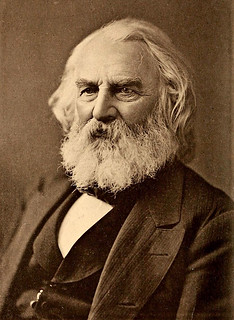 Portland, Maine's Henry Wadsworth Longfellow was an established and well-read American poet of the mid-1800s. In 1855, only a few years before these banks issued their notes, he completed an epic poem about a fictitious Ojibwa warrior named Hiawatha and his female Dakota companion and love, Minnehaha. This poem, The Song of Hiawatha, quickly became an American classic. These two banks evidently thought the vignette showing the two Native Americans and the waterfall would be a good subject to place on their notes. The name Minnehaha when translated from the Native tongue means,
Portland, Maine's Henry Wadsworth Longfellow was an established and well-read American poet of the mid-1800s. In 1855, only a few years before these banks issued their notes, he completed an epic poem about a fictitious Ojibwa warrior named Hiawatha and his female Dakota companion and love, Minnehaha. This poem, The Song of Hiawatha, quickly became an American classic. These two banks evidently thought the vignette showing the two Native Americans and the waterfall would be a good subject to place on their notes. The name Minnehaha when translated from the Native tongue means, waterfall
or dancing waters
. The place shown in the vignette of the notes is the falls at the not-yet-named Minnehaha Park in Minneapolis. The engraver precisely portrayed the falls and surroundings which can be seen when comparing the different images above, leaving little if any chance of ambiguity as to the identification of the visual content.
Jacob Fjelde, a Norwegian sculptor then living in Minnesota, created a plaster sculpture depicting Hiawatha and Minnehaha for the Minnesota Building at the 1893 World's Columbian Exhibition in Chicago. A bronze version of Fjelde's work was placed in Minnehaha Park above the falls in 1912.
I was later surprised to note that the vignette (Minnehaha Falls) used on these notes had never before been attributed or identified on paper money or in any of the paper money references as I am now doing in this issue of NENA News. There is no mention of it in either the Hewett book or its predecessor, Minnesota Obsolete Notes and Scrip by R.H.Rockholt, 1973. While I have not been able to find corroborating proof of the two Native subjects' identity in the engraved scene in the U.S. Obsolete Bank Notes book, it certainly seems reasonable to claim that these vignettes show the fictitious characters, Hiawatha and Minnehaha of Longfellow's poem posing at the base of Minnehaha Falls in Minneapolis. The area around the falls and along the creek is now a preserve in the city of Minneapolis named Minnehaha Regional Park. The fact that the park, the poem, and the vignettes are intertwined makes for a beautiful American story. Longfellow never actually visited this site, but if he knew his poem was the cause of his two subjects being included in this banknote vignette I'm sure he would have been pleased.
John adds:
"I have since noticed a third banknote with the same vignette. It was from a state close to Minnesota. But, still no identification of the vignette."
For more information on the New England Numismatic Association, see:
https://www.nenacoin.org/
SOME COIN ART EYE CANDY
While looking for others things this week I came across a Collectors Universe forum thread from last year about coin art. Here are some that caught my eye. -Editor
To read the complete discussion thread, see:
Showing off my coin art!
(https://forums.collectors.com/discussion/1056570/showing-off-my-coin-art)
LOOSE CHANGE: FEBRUARY 20, 2022
Here are some additional items in the media this week that may be of interest. -Editor
A CoinWeek article by Tyler Rossi discusses foreign coins struck by the U.S. Mint. Here's an excerpt - see the complete article online. Some interesting numismatic tidbits here. -Editor
The first-ever foreign coin struck by the U.S. was a Liberia One Cent coin in 1833. This series was intended to help fund the Back to Africa movement, which many prominent white Americans supported because they believed that emancipated slaves could never live alongside their freeborn counterparts. This coin was not included in the U.S. Mint's annual reports, probably because many people considered did not consider it a true coin but instead more of a hard times token or colonial script.
n all, the Mint produced 11,193,348,346 foreign coins at six facilities–Philadelphia, Denver, San Francisco, New Orleans, West Point, and Manila–for 43 different nations: Argentina, Australia, Bahamas, Belgian Congo, Belgium, Bolivia, Brazil, Canada, China, Colombia, Costa Rica, Cuba, Curacao, Dominican Republic, Ecuador, Ethiopia, Fiji, France, French Indo-China, Greenland, Guatemala, Kingdom of Hawaii, Honduras, Israel, Liberia, Mexico, Nepal, Netherlands, Netherlands East Indies, Nicaragua, Panama, Peru, Philippines, Poland, El Salvador, Saudi Arabia, South Korea, Surinam, Syria, Taiwan, Thailand, and Venezuela.
While all designs, specifications, and compositions were dictated by the contracting government, the United States would usually engrave the dies. However, there are some cases where the customer would give the dies to the Mint or contract with a third-party company to manufacture the dies. For example, in 1897 the Dominican Republic contracted the Paris Mint to engrave its 1 Peso dies, which were subsequently sent to the Philadelphia Mint for use. These coins actually bear the Paris Mint Mark A
.
Dominican Republic
Like the Costa Rican Colones, the design of all the denominations struck at the Philadelphia Mint for the Dominican Republic are the same. The obverse designs depict a left-facing bust of Lady Liberty wearing a stylized native headdress; the headband is engraved with the legend LIBERTAD. The denomination is placed against the denticled border to the left and the date to the right of the bust. The reverse is the Dominican Republic's shielded Coat of Arms. The country's name REPUBLICA DOMINICANA encircles the rim at the top of the coin, and the weight 5 GRAMOS at the bottom. The A mintmark for the Paris Mint is above the A
in GRAMOS
To read the complete article, see:
Foreign Coins Struck by the United States Mint in the 19th Century
(https://coinweek.com/world-coins/foreign-coins-struck-by-the-united-states-mint-in-the-19th-century/)
Coins like the 1933 Double Eagle aren't the only big-ticket items produced by American sculptor Augustus Saint-Gaudens - one of his Lincoln bronzes sold for nearly a million dollars. -Editor
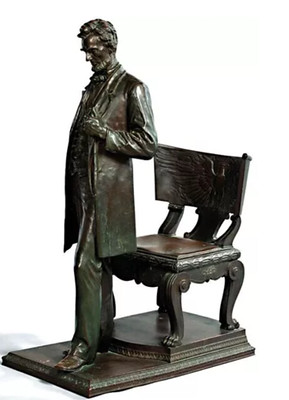 The 3ft 4in (1m) high bronze titled Abraham Lincoln: The Man (Standing Lincoln) is by the American sculptor Augustus Saint-Gaudens (1848-1907) and is a smaller version of a commission of 1883 for a monumental statue of the president for Chicago's Lincoln Park.
The 3ft 4in (1m) high bronze titled Abraham Lincoln: The Man (Standing Lincoln) is by the American sculptor Augustus Saint-Gaudens (1848-1907) and is a smaller version of a commission of 1883 for a monumental statue of the president for Chicago's Lincoln Park.
Skinner's bronze, which was cast before 1926, is one of a series of reductions cast from the original maquette made by Saint-Gaudens that were overseen by the sculptor's widow and begun in 1912.
It is signed and inscribed COPYRIGHT 1912 BY A.H.SAINT-GAUDENS on the back edge of the base, and AVGVSTVS SAINT GAVDENS SCVLPTOR M.D.CCC.LXXXVII along the left edge, and inscribed E PLVRIBVS VNVM on the chair. It had a provenance to a Massachusetts educational institution, probably since the 1930s, possibly earlier.
It made $950,000 (£698,530), just over the upper end of its $700,000-900,000 estimate, and was sold to the Colby College Museum of Art, in Maine where it will now go on public display in the Lunder Collection.
To read the complete article, see:
Abraham Lincoln bronze scaled down but makes a big price
(https://www.antiquestradegazette.com/print-edition/2022/february/2530/international/abraham-lincoln-bronze-scaled-down-but-makes-a-big-price/)
This article from The Telegram cites a study of how well people can detect counterfeit banknotes. -Editor
New study shows that the brain is able to detect counterfeit money immediately, but it doesn't always act the information...
To read the complete article, see:
Trust your gut: Most people can spot a fake bank note in under a second
(https://www.telegraph.co.uk/news/2022/02/19/trust-gut-people-can-spot-fake-bank-note-second/)
For those interested in U.S. colonial history, here's an interesting non-numismatic blog article I came across about the Stamp Act. -Editor
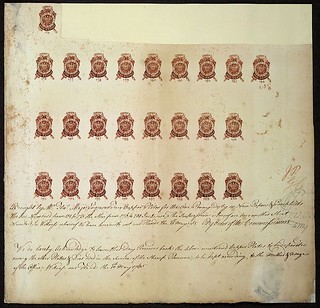 The Stamp Act was quickly repealed, even before it could be enacted in America. By now, all the tax collectors had resigned, for fear of ending up in Boston Harbor wearing whatever you would wear instead of concrete boots in 1766.
The Stamp Act was quickly repealed, even before it could be enacted in America. By now, all the tax collectors had resigned, for fear of ending up in Boston Harbor wearing whatever you would wear instead of concrete boots in 1766.
But Americans were seriously ticked off at having their loyalty called into question. Parliament was ticked off at the Americans' refusal to contribute to their defense. And things gradually slid downhill, until . . .
Lord Cornwallis surrendered the American colonies to George Washington, to the theme tune of The World Turned Upside Down , played by the massed British Army bands (yes, that happened) after losing the Battle of Yorktown in 1781. British America hadn't really ended, of course: The colonies in the West Indies (enslaved people growing sugar) were far more profitable than the podunk operations on the mainland. But the mainland was now on its way to being what the Brits think America is for these days. She says cryptically.
Here's the design for the never-were stamps for British America:
To read the complete article, see:
The Stamp Tax That's Still With Us
(https://annettelaing.substack.com/p/the-stamp-tax-thats-still-with-us)
FEATURED WEB SITE: RNUMIS
This week's Featured Web Site is rNumis.
In 2012 rNumis was launched by Dr. Steve Moulding as a website that sold coin auction catalogs and fixed price lists, with a primary (but not exclusive) focus on Ancient Greece. We still do that (see LITERATURE FOR SALE in the main menu).
Behind the scenes - and over the past 9 years - we have been creating an extensive numismatic digital library. This library provides the material for our numismatic databases and these databases, in turn, provide the data for our numismatic research tools, some of which will be offered here. One of our main goals, for example, is an online resource for provenance research.
So while we will continue to sell physical catalogs that we no longer need, the website is being transitioned to the research site we always wanted. We still have an enormous amount of work to do, building the website and the research tools, and especially in populating the Greek Coins database, but we are excited to be moving in this direction and will report our progress here.
https://www.rnumis.com/

